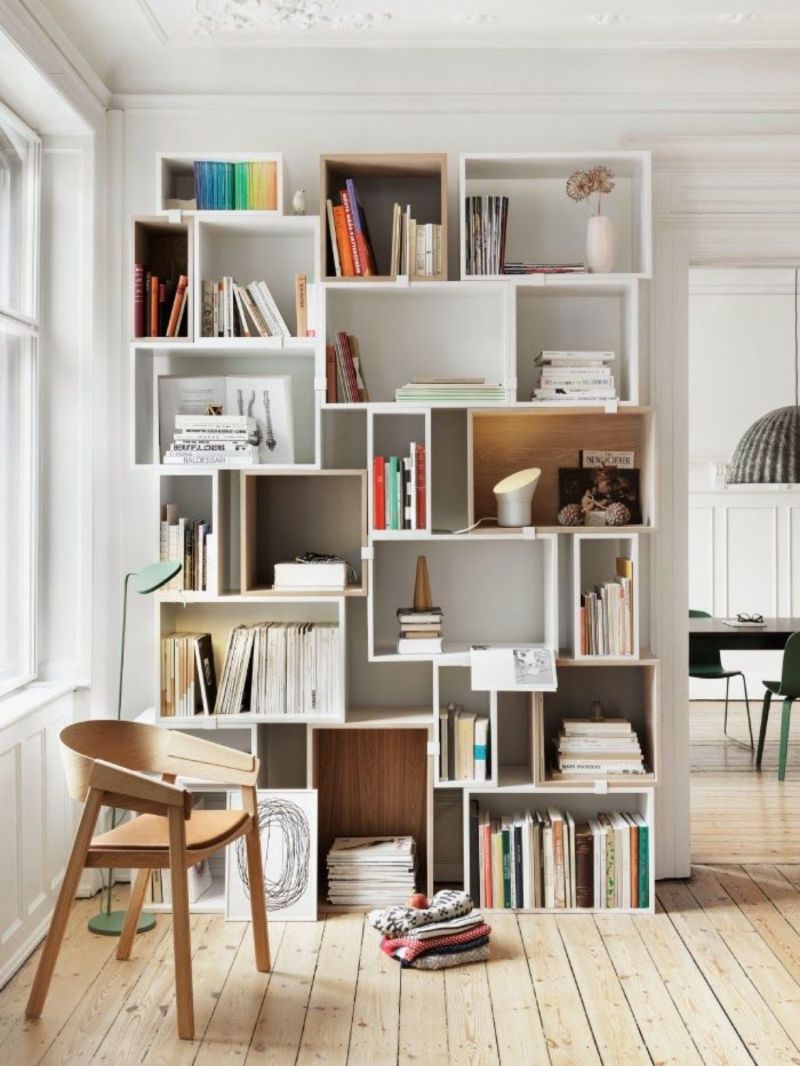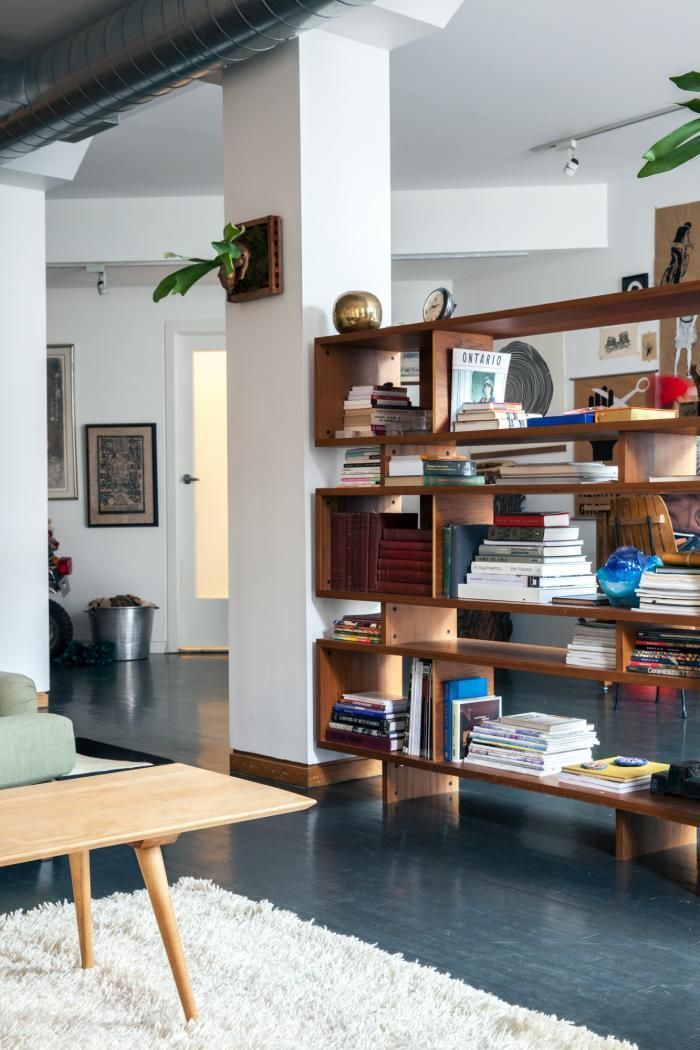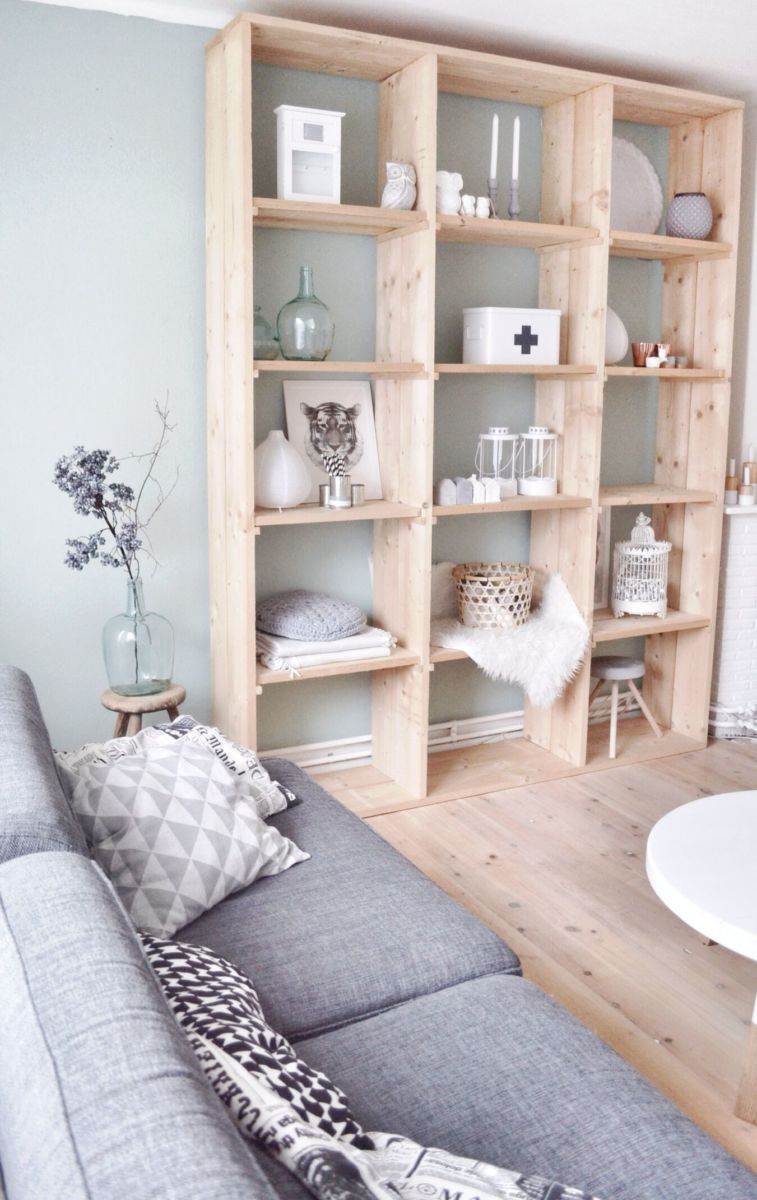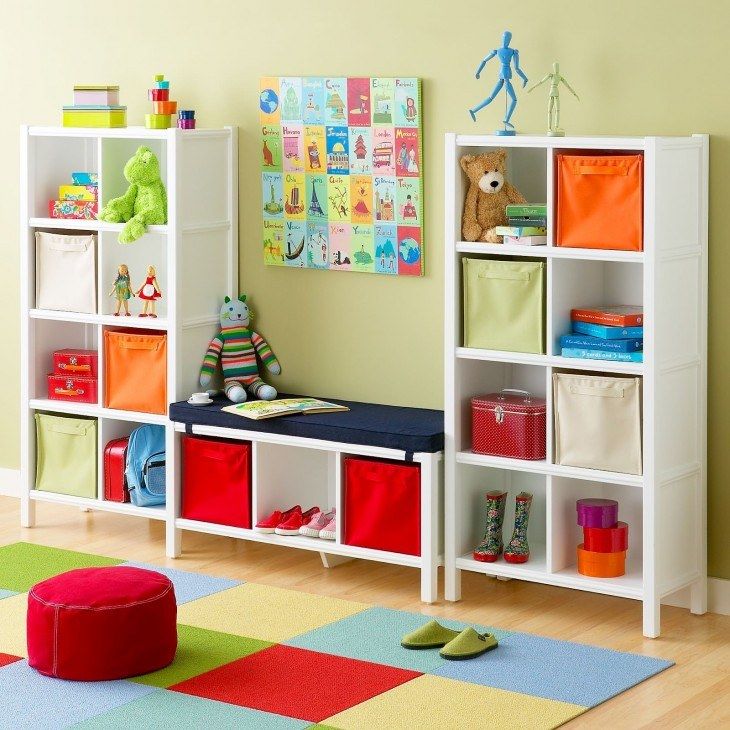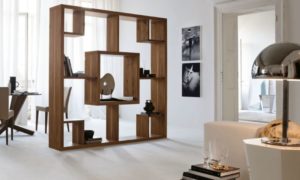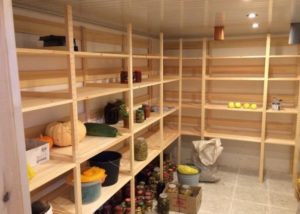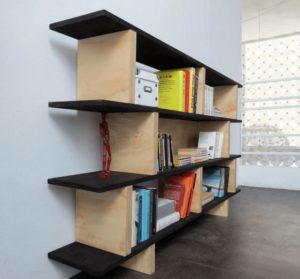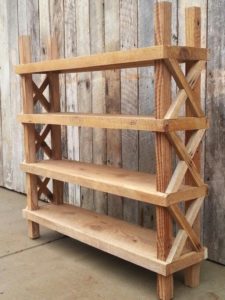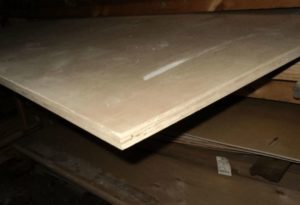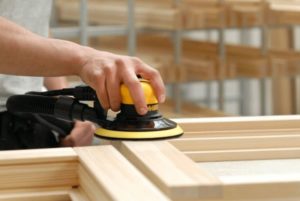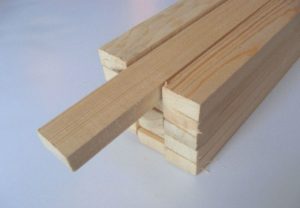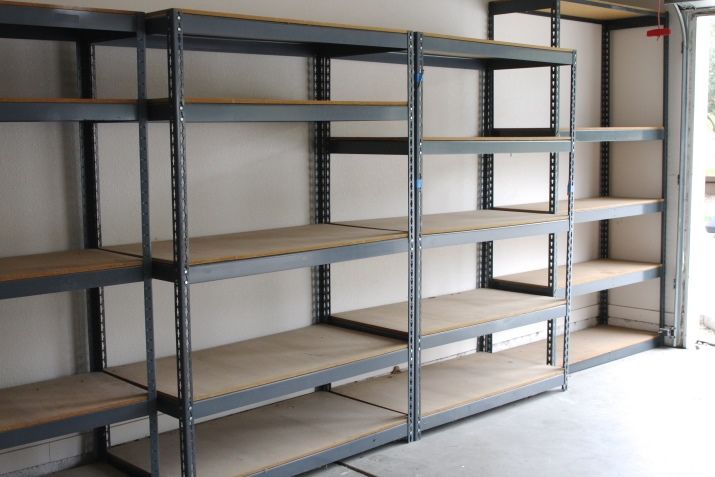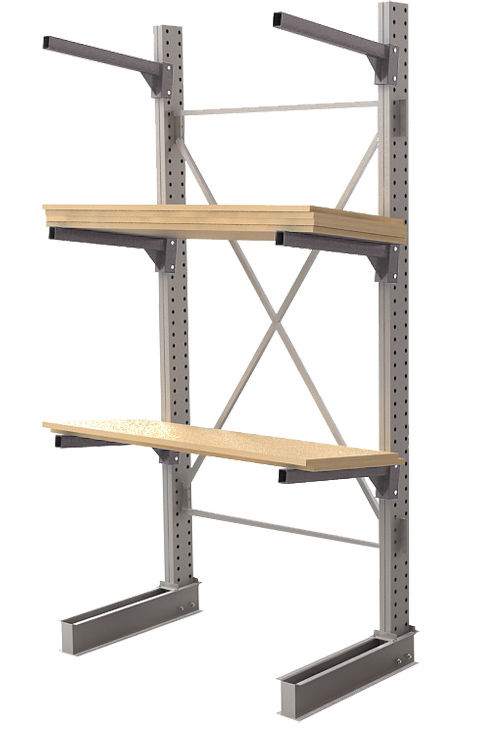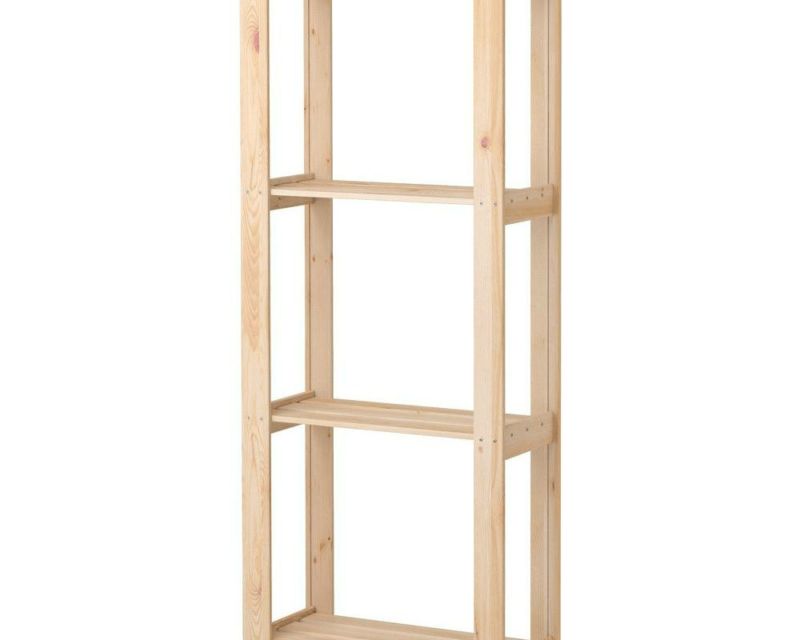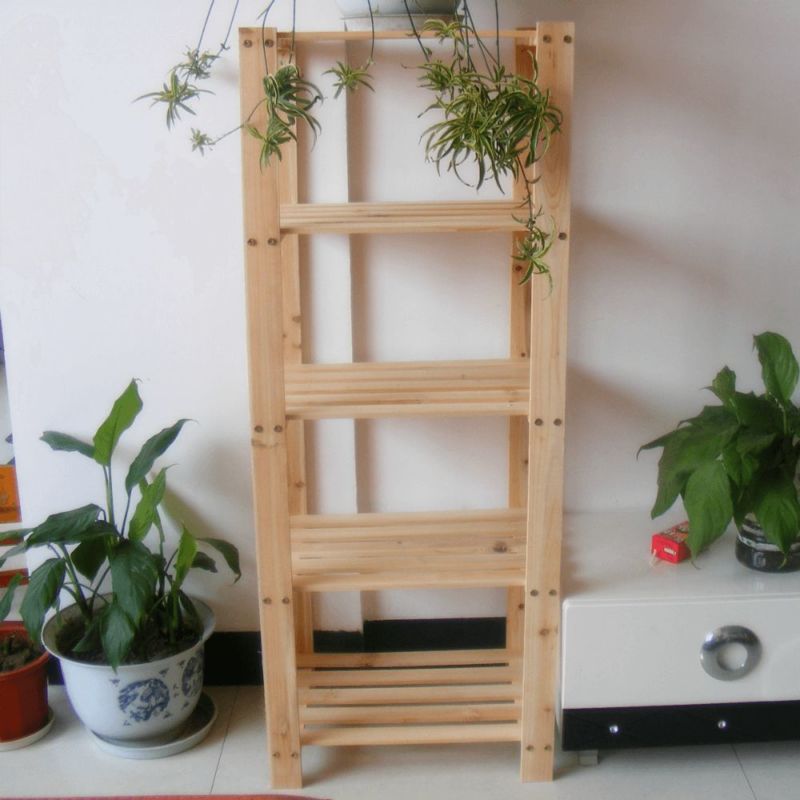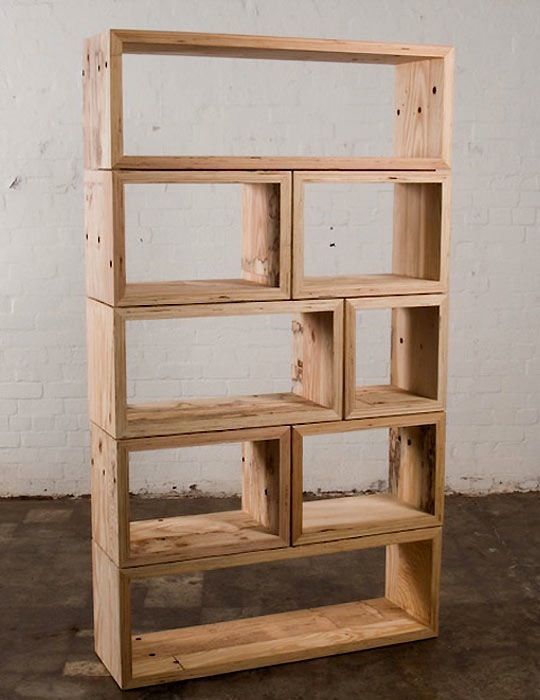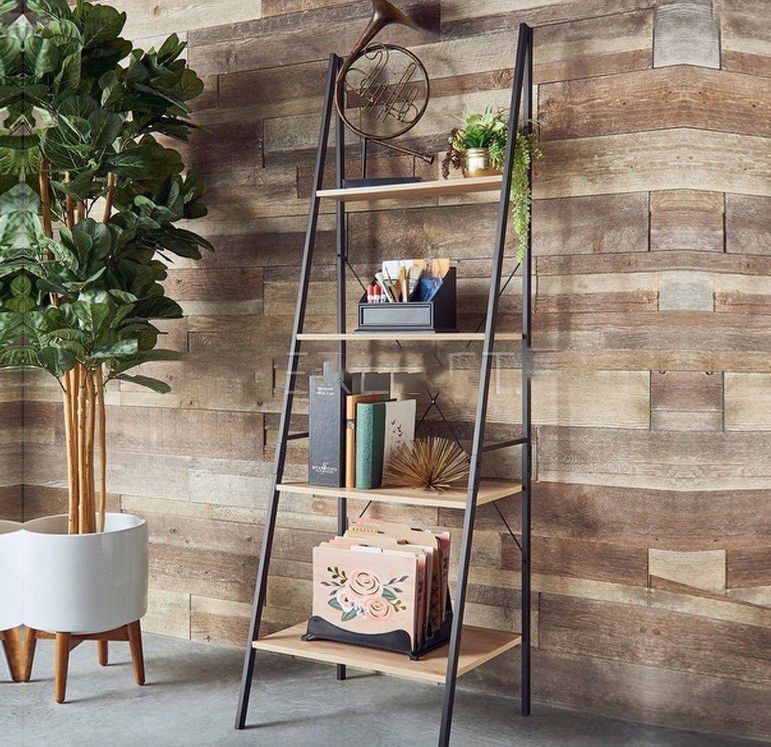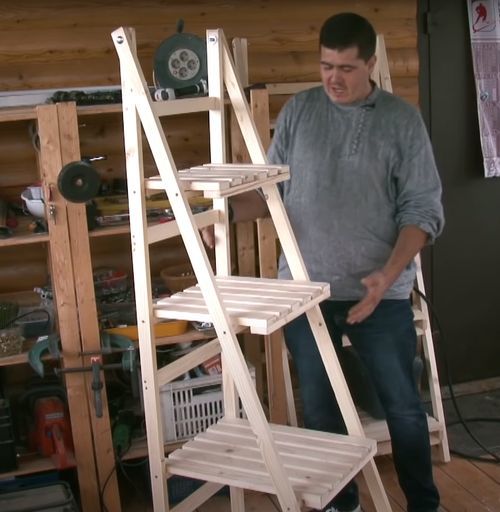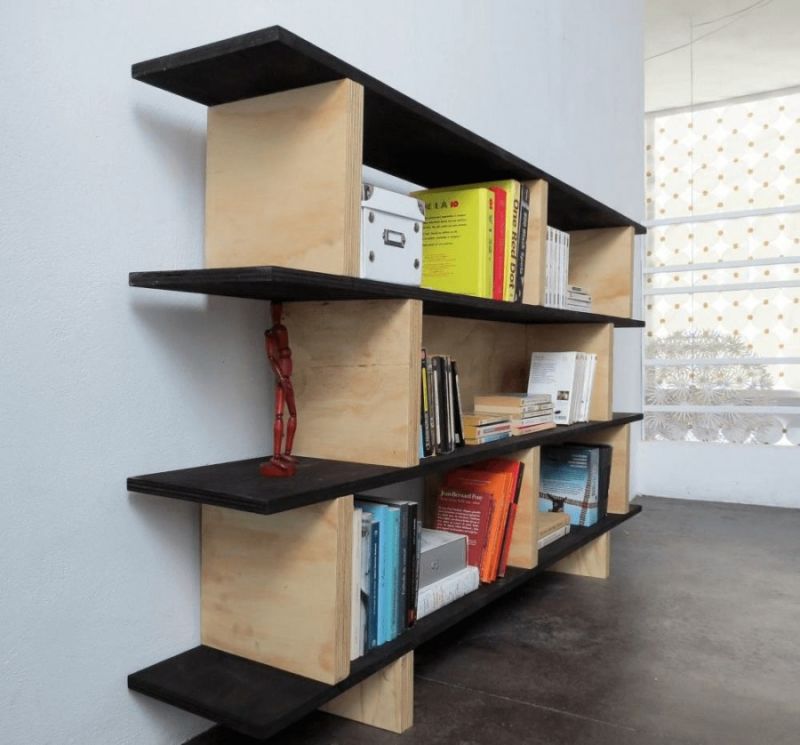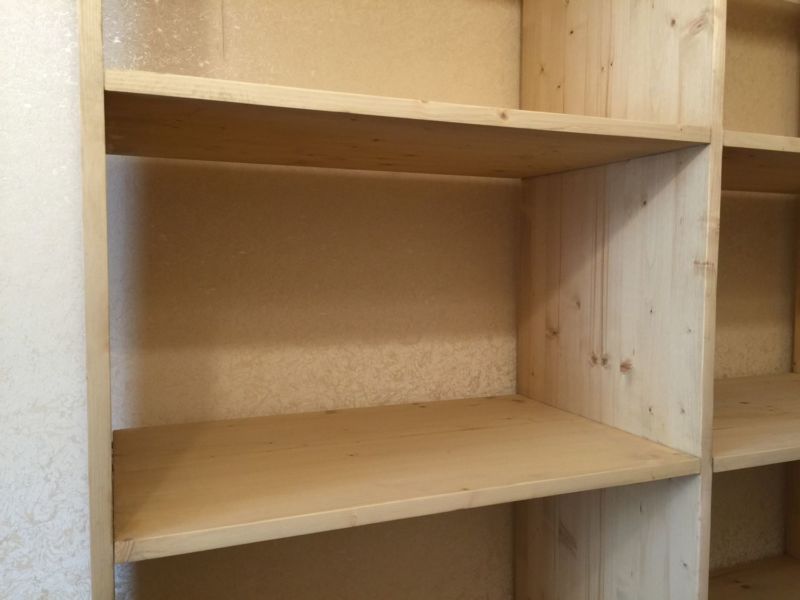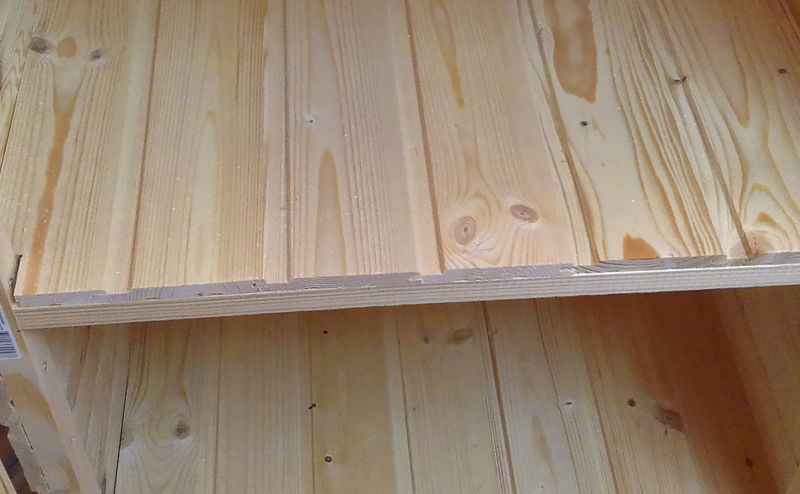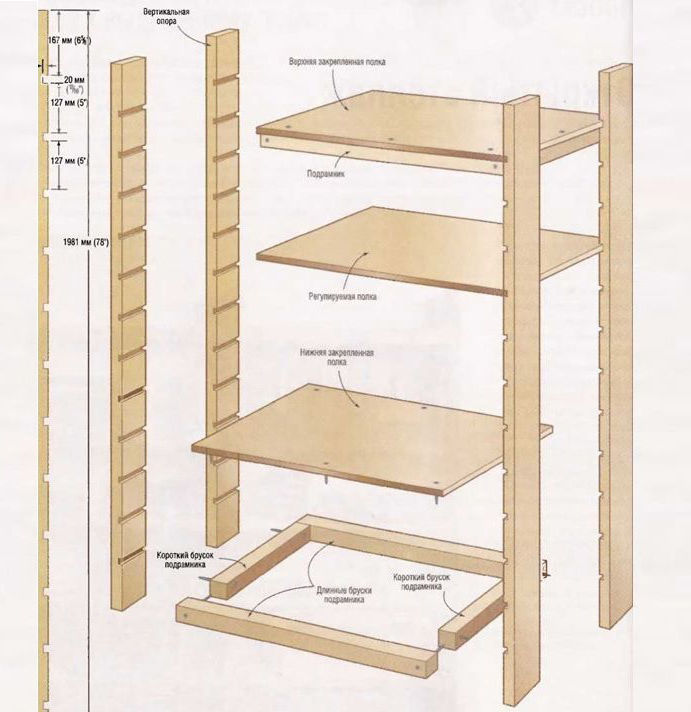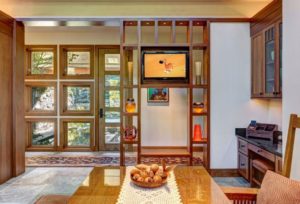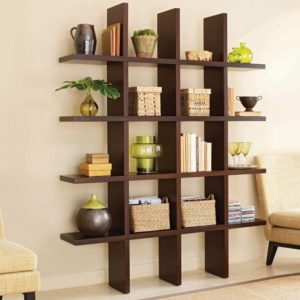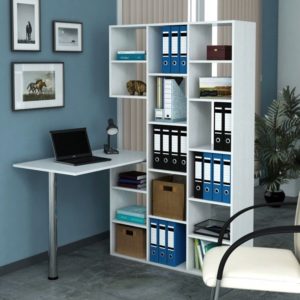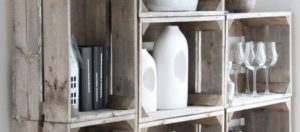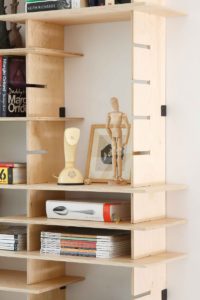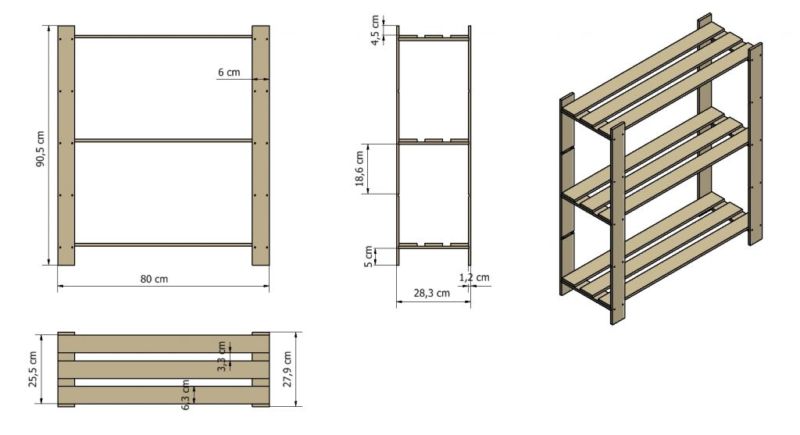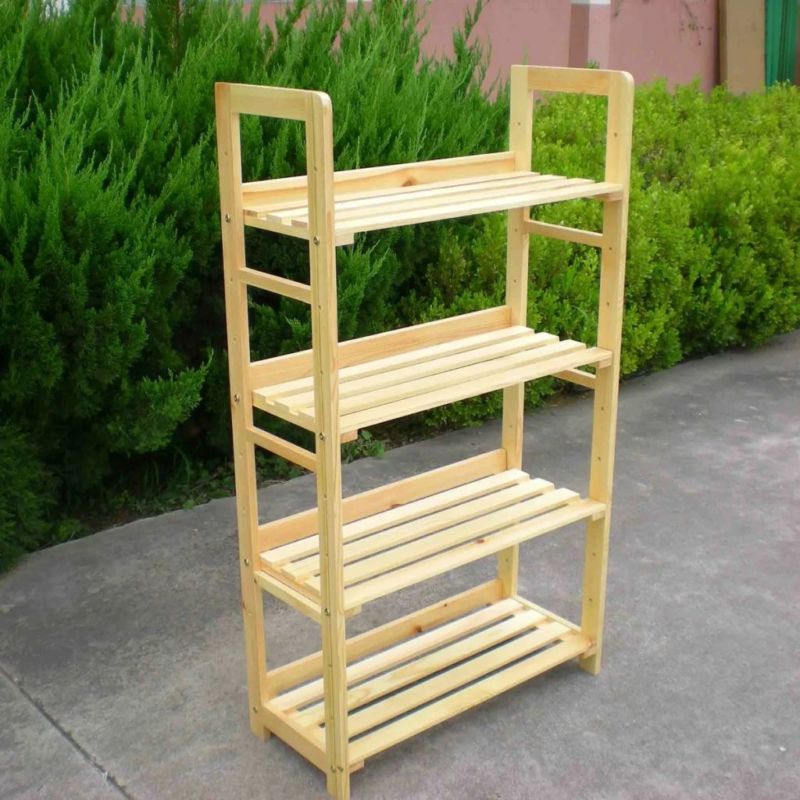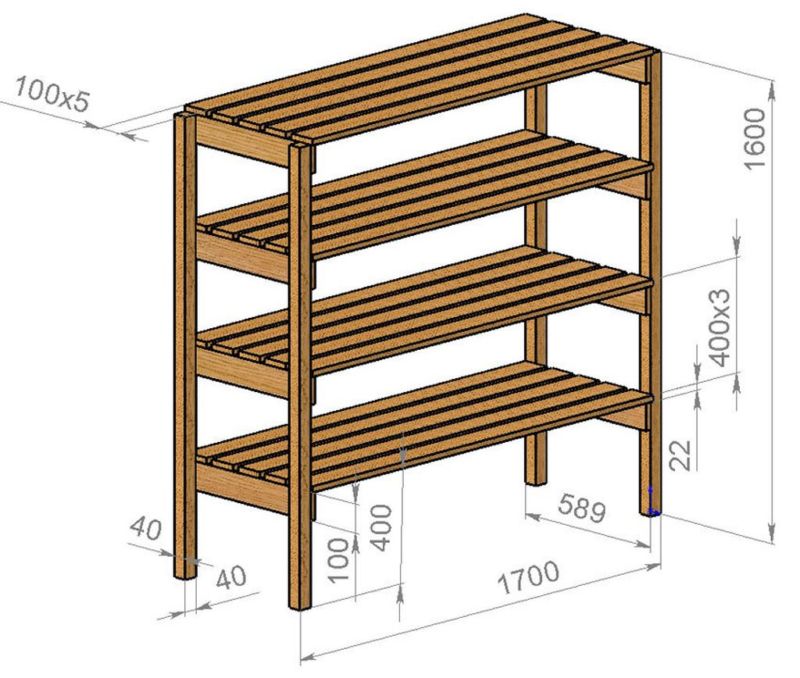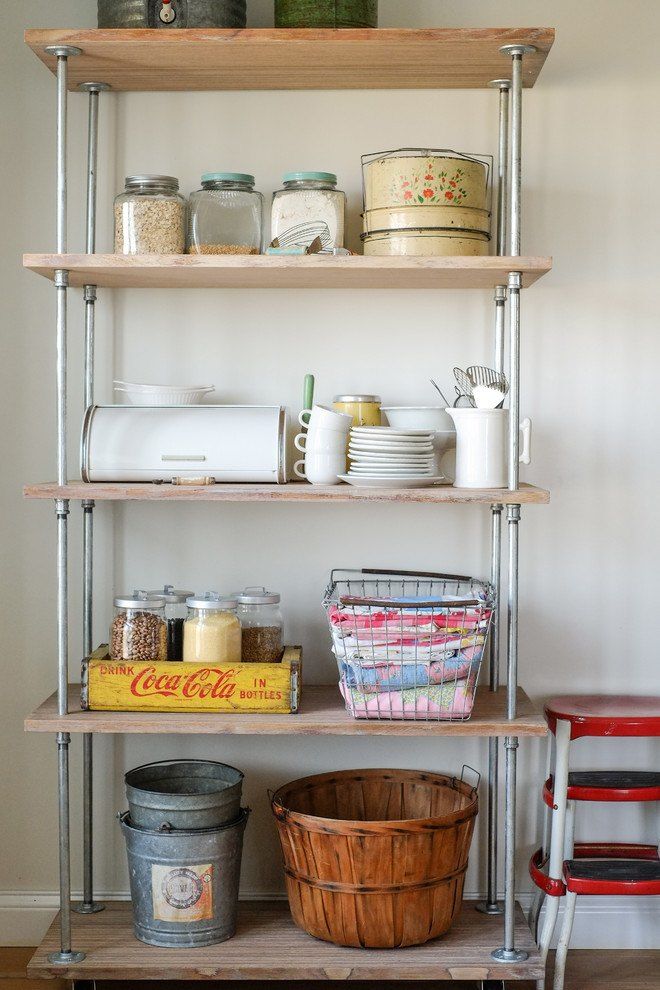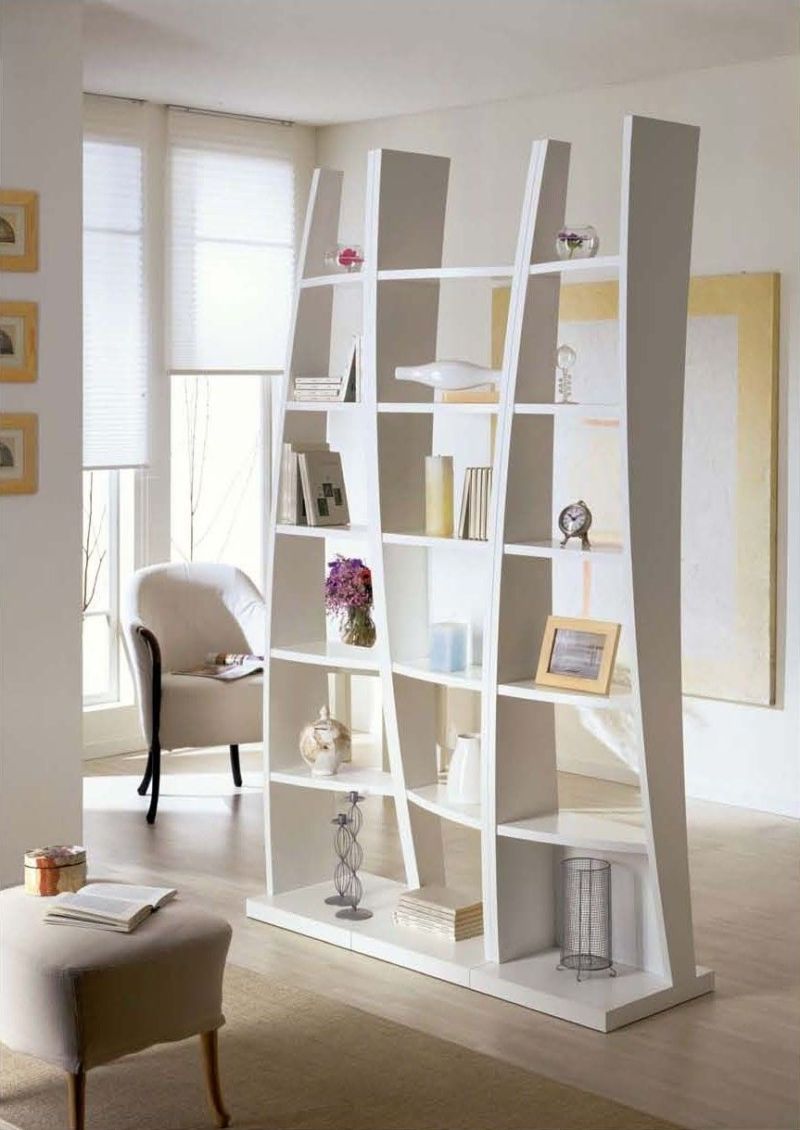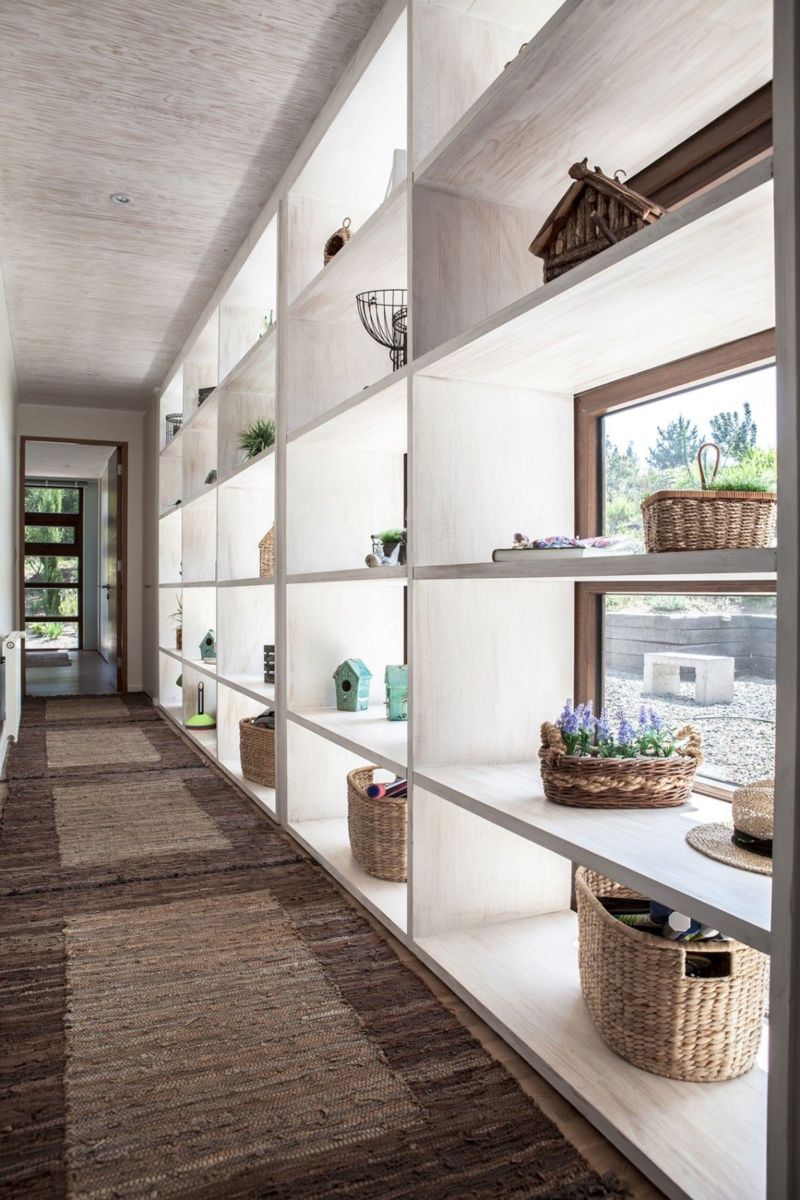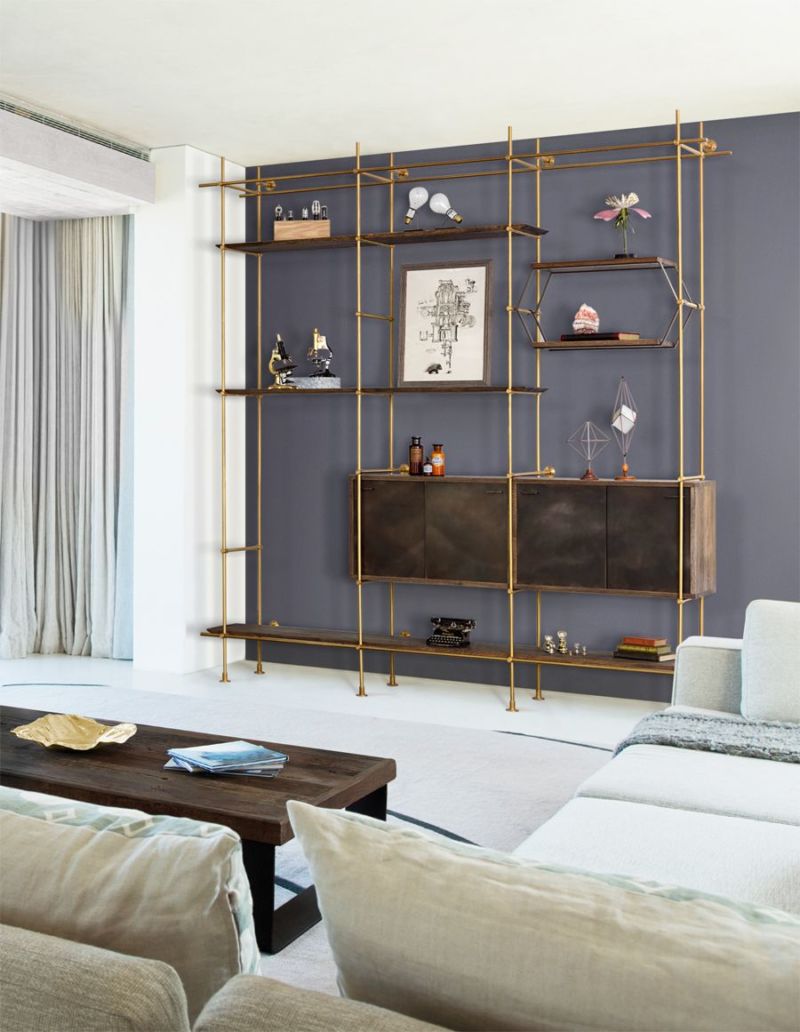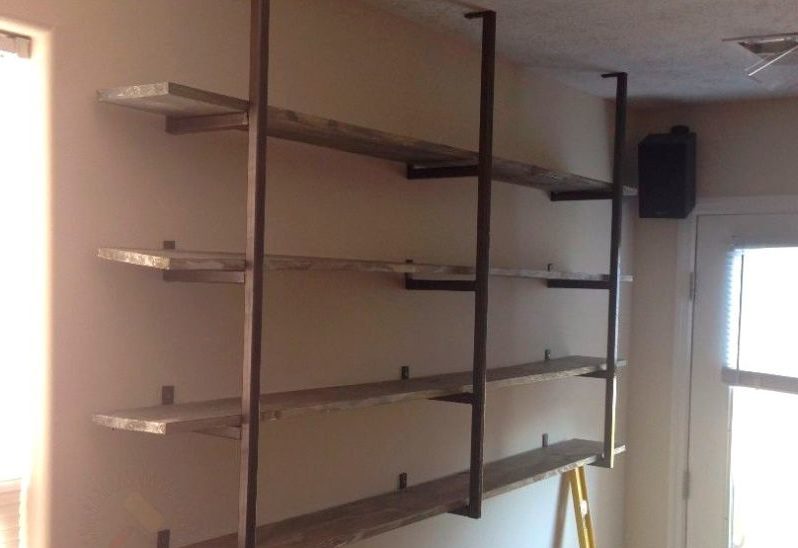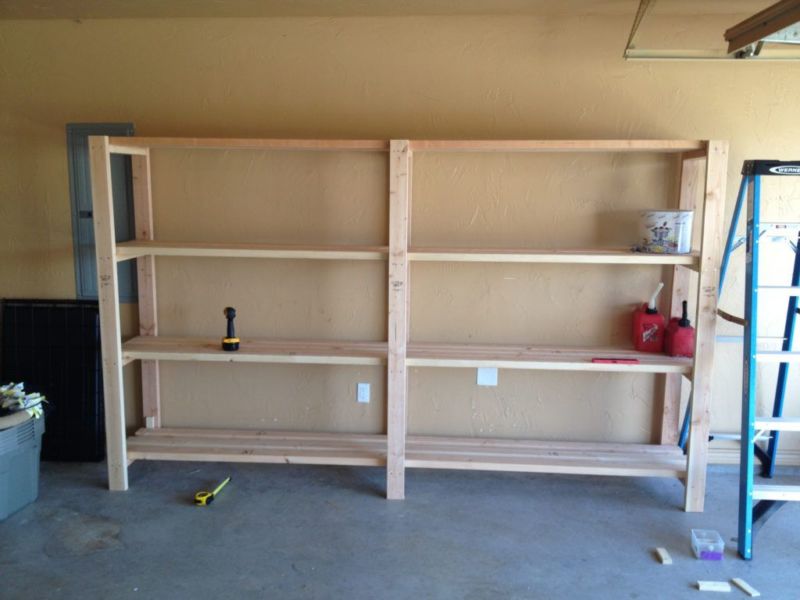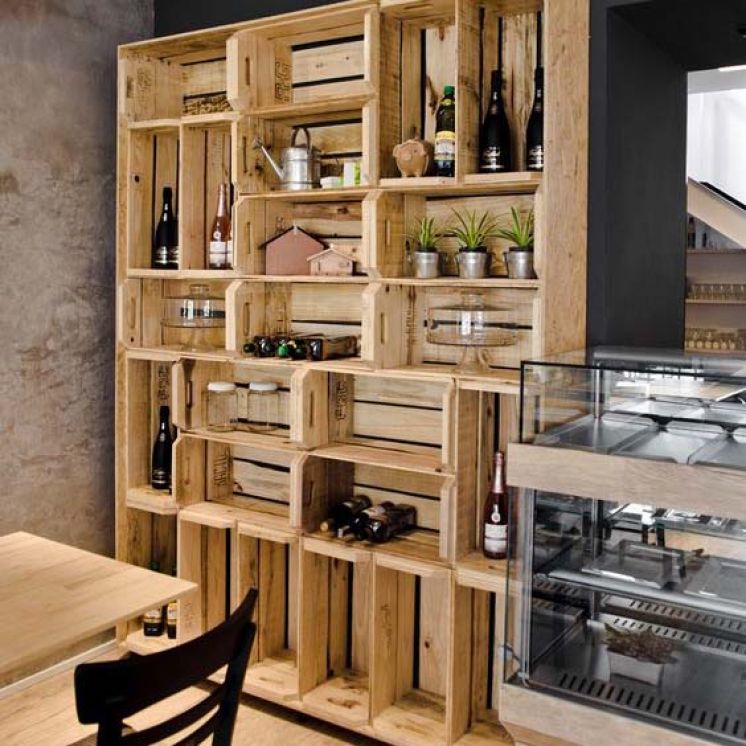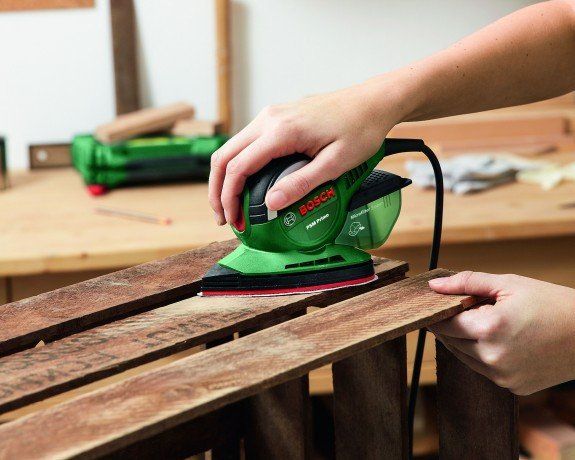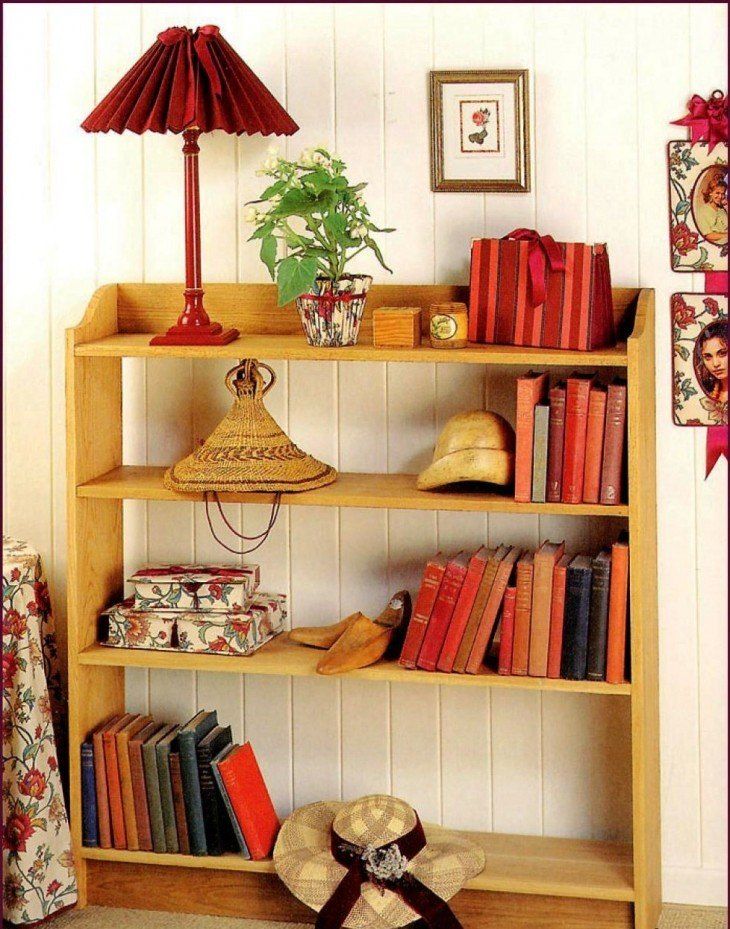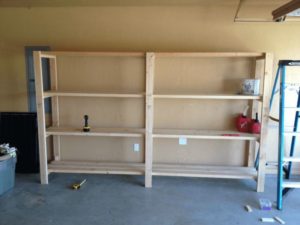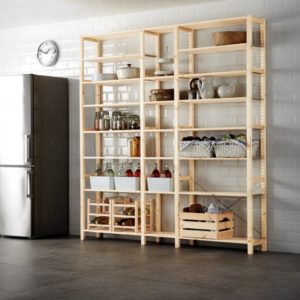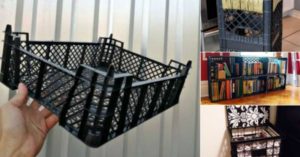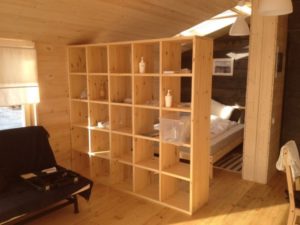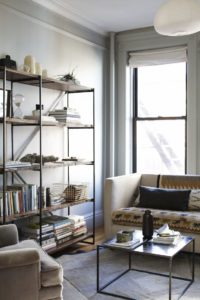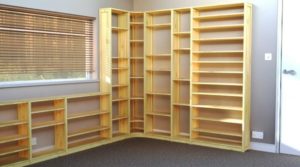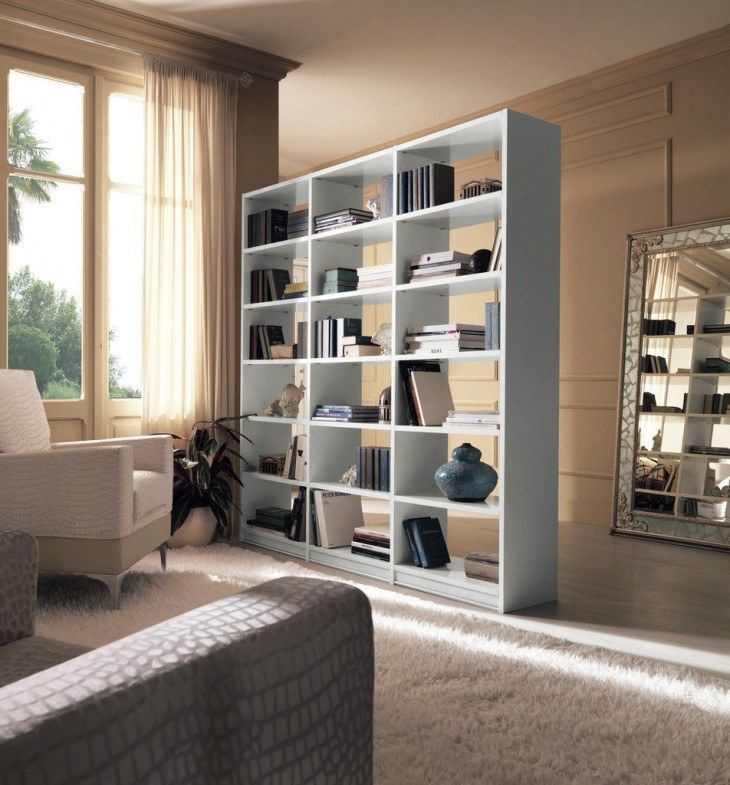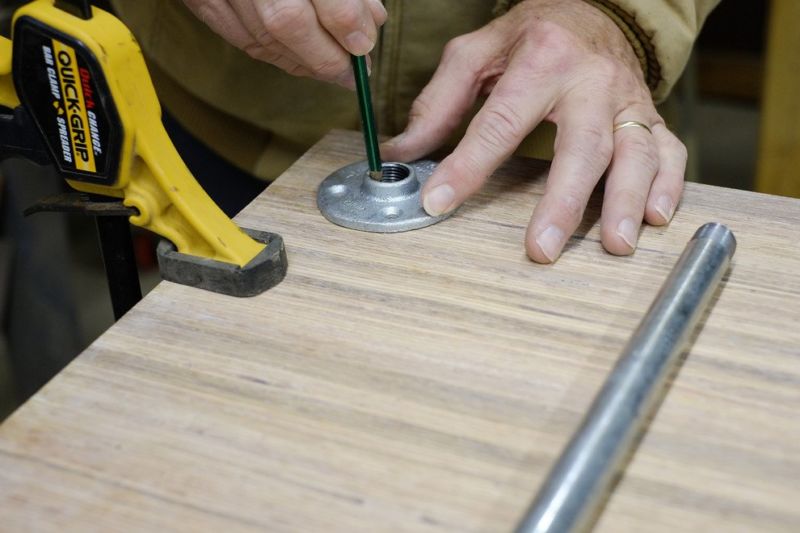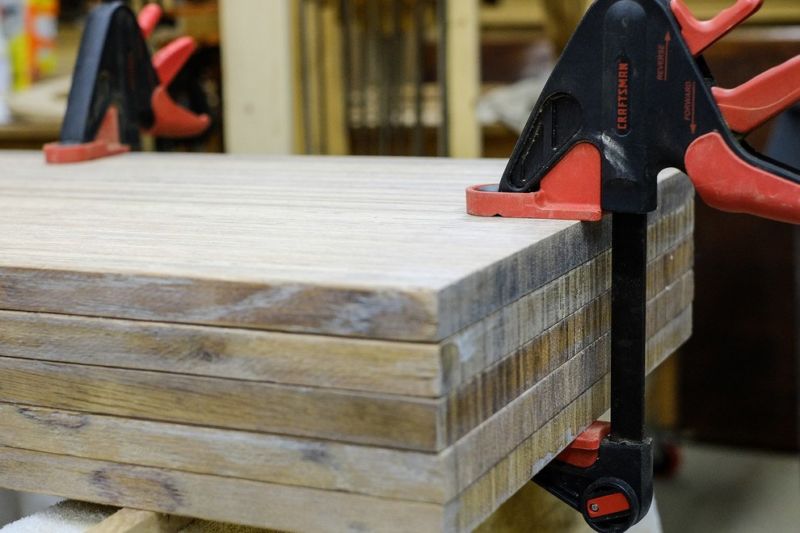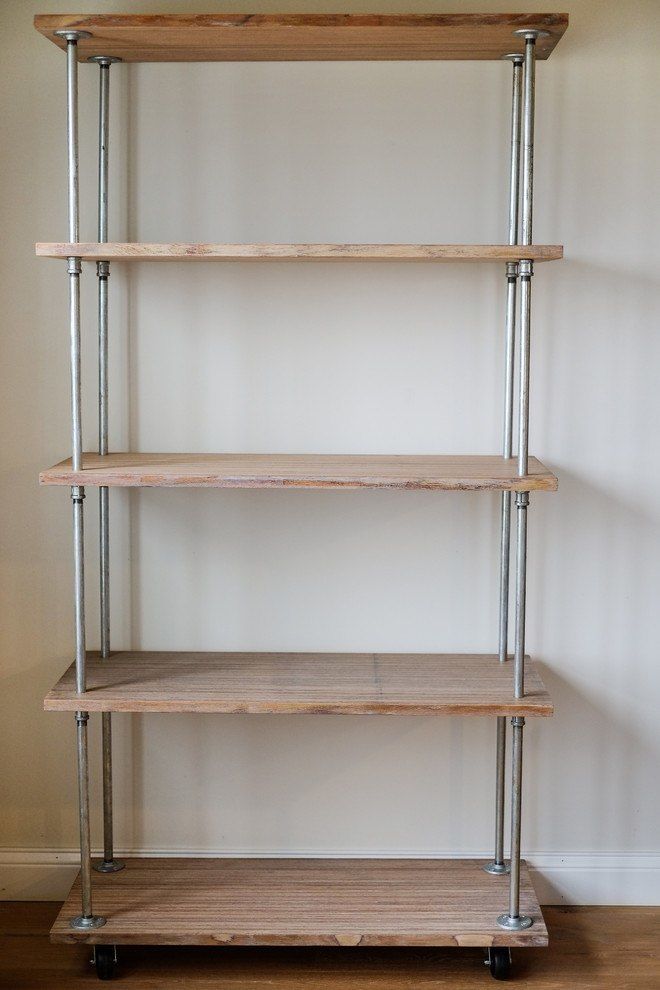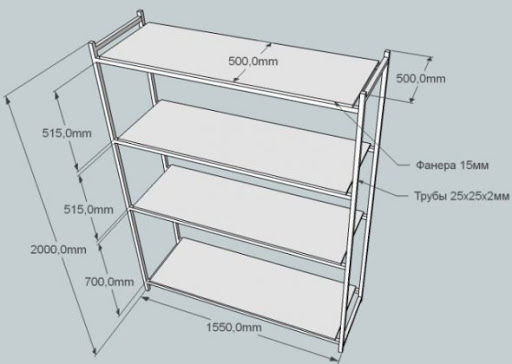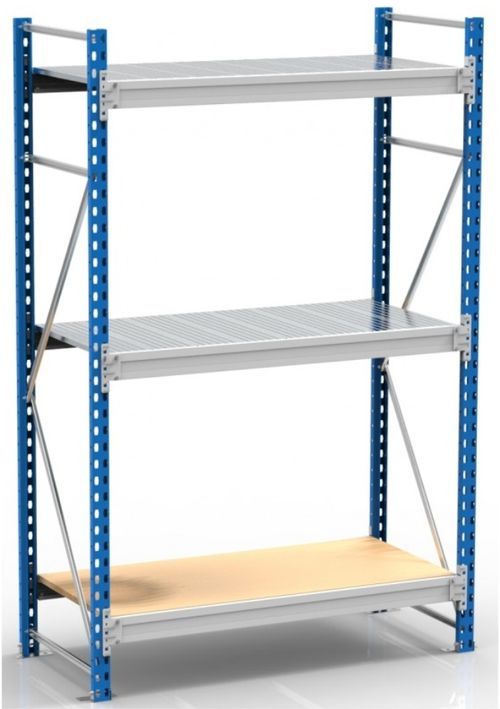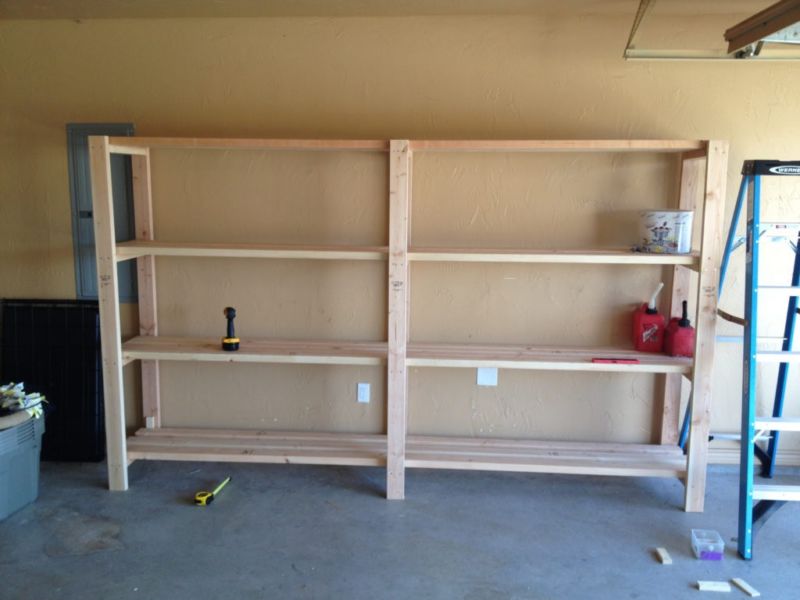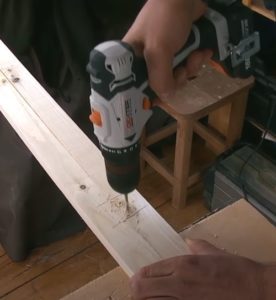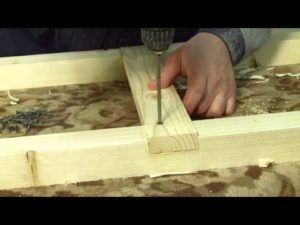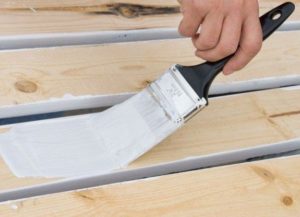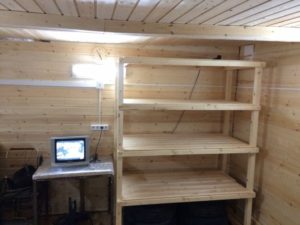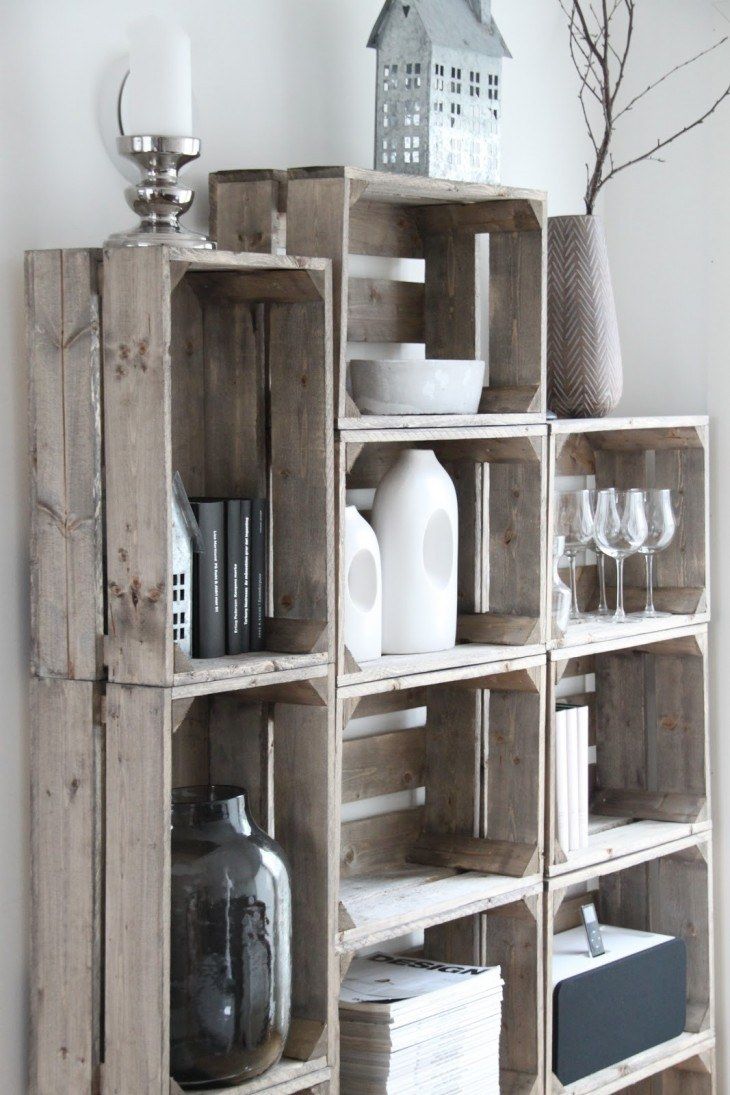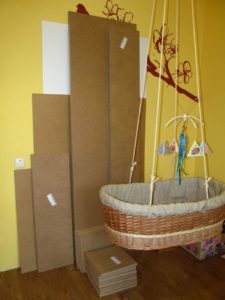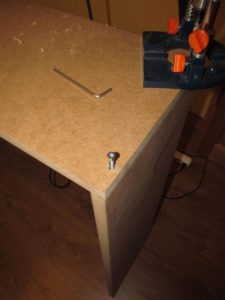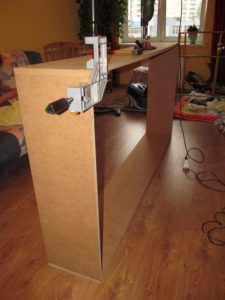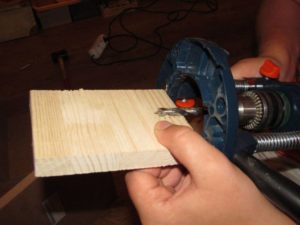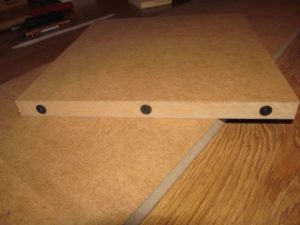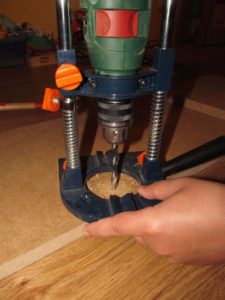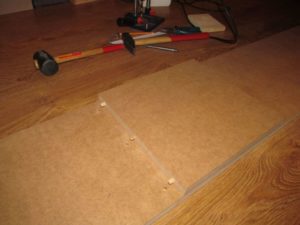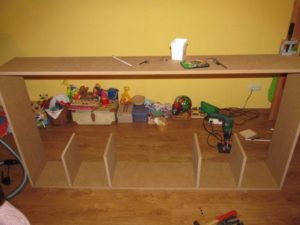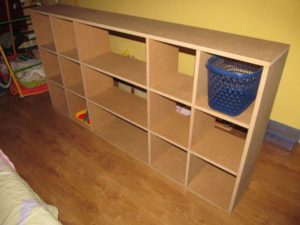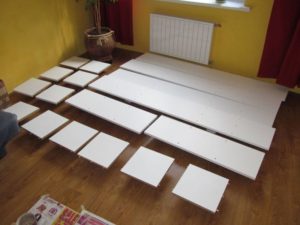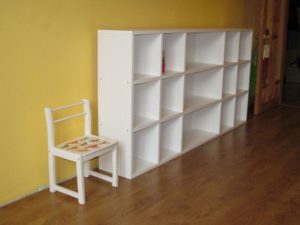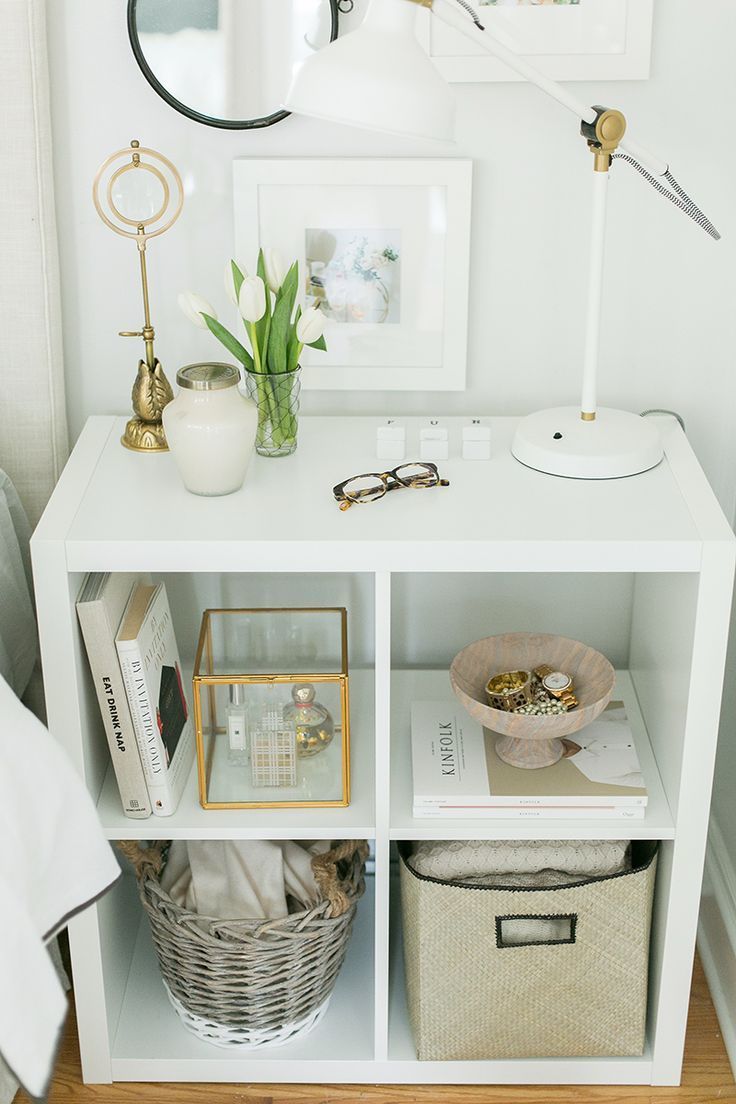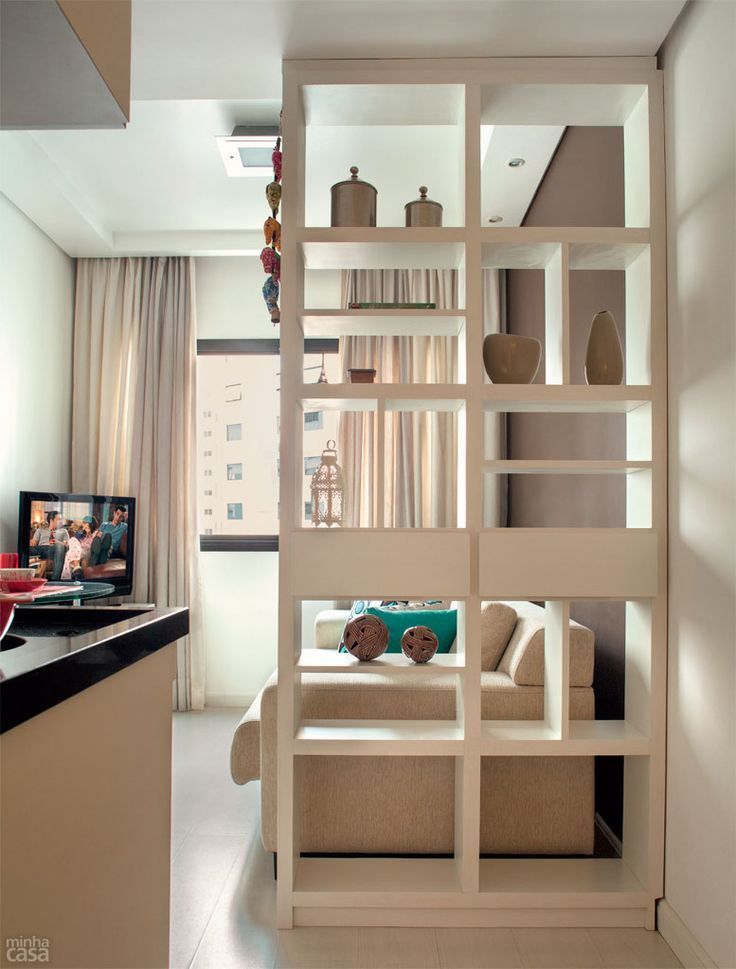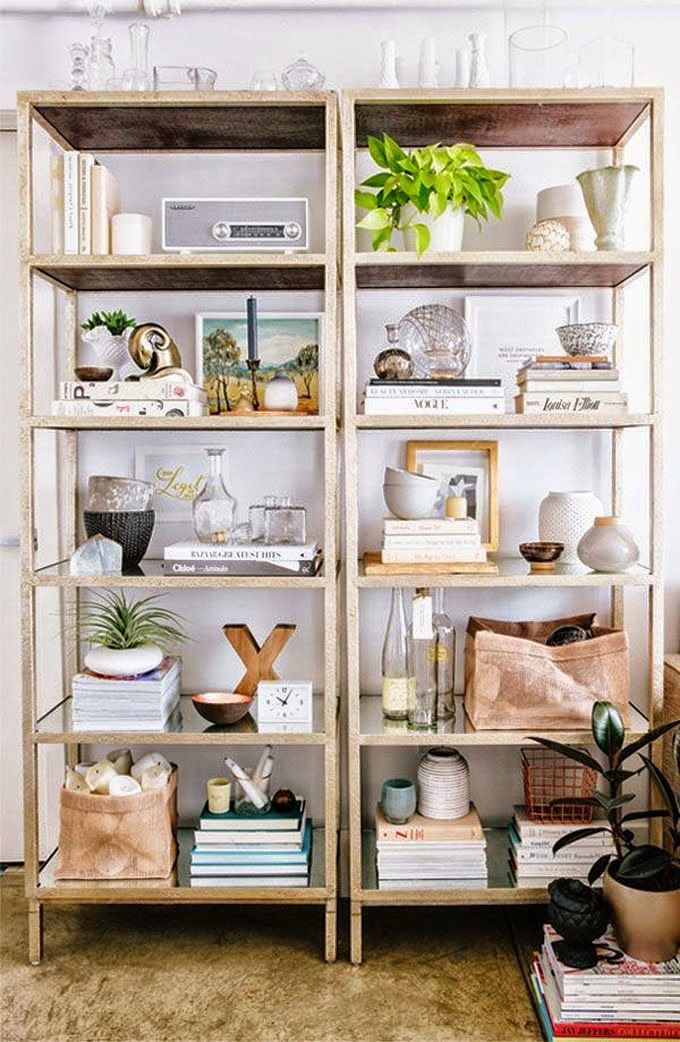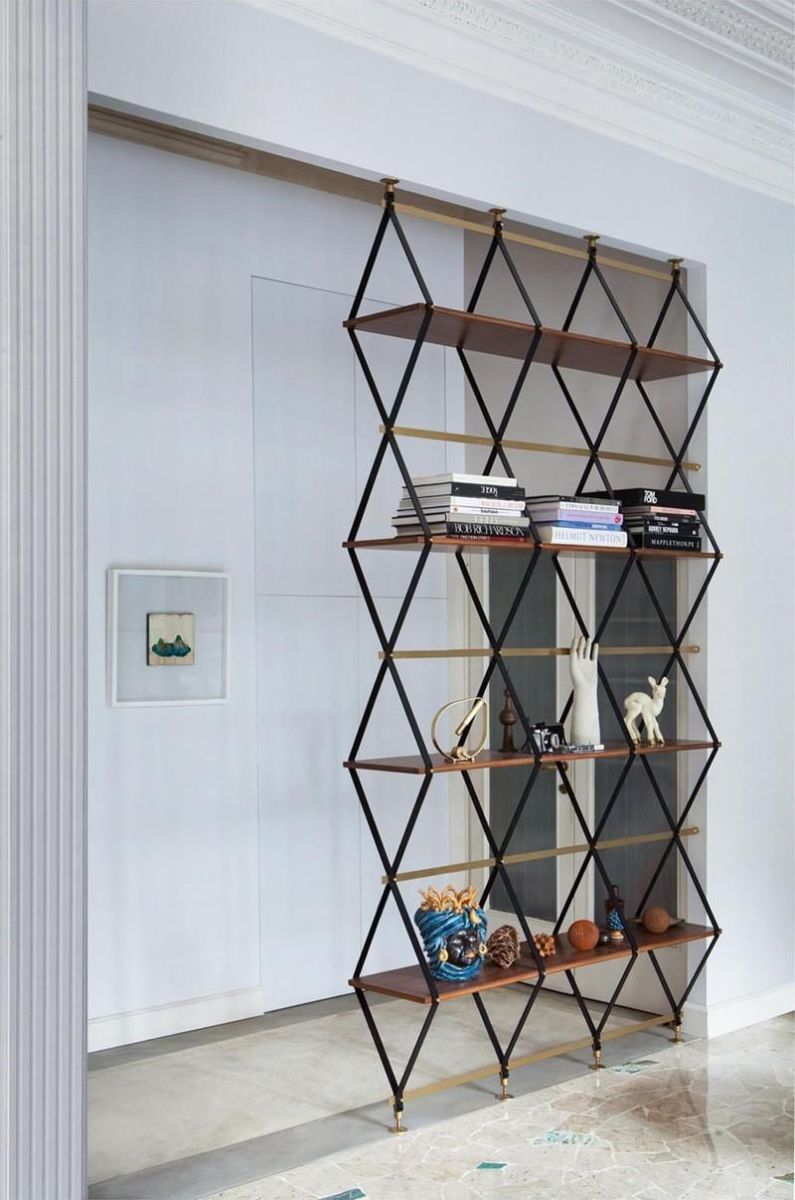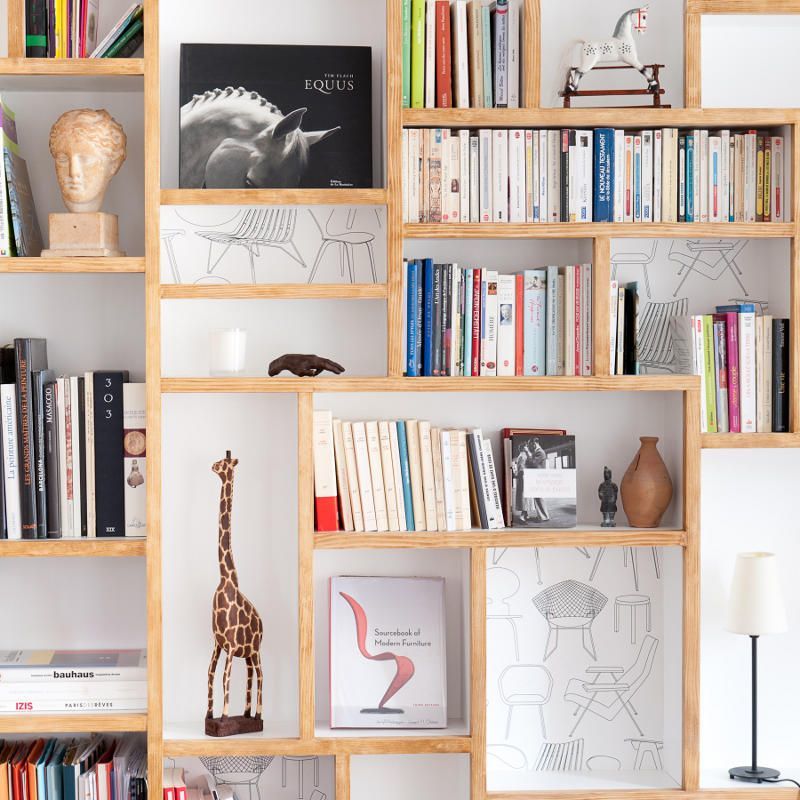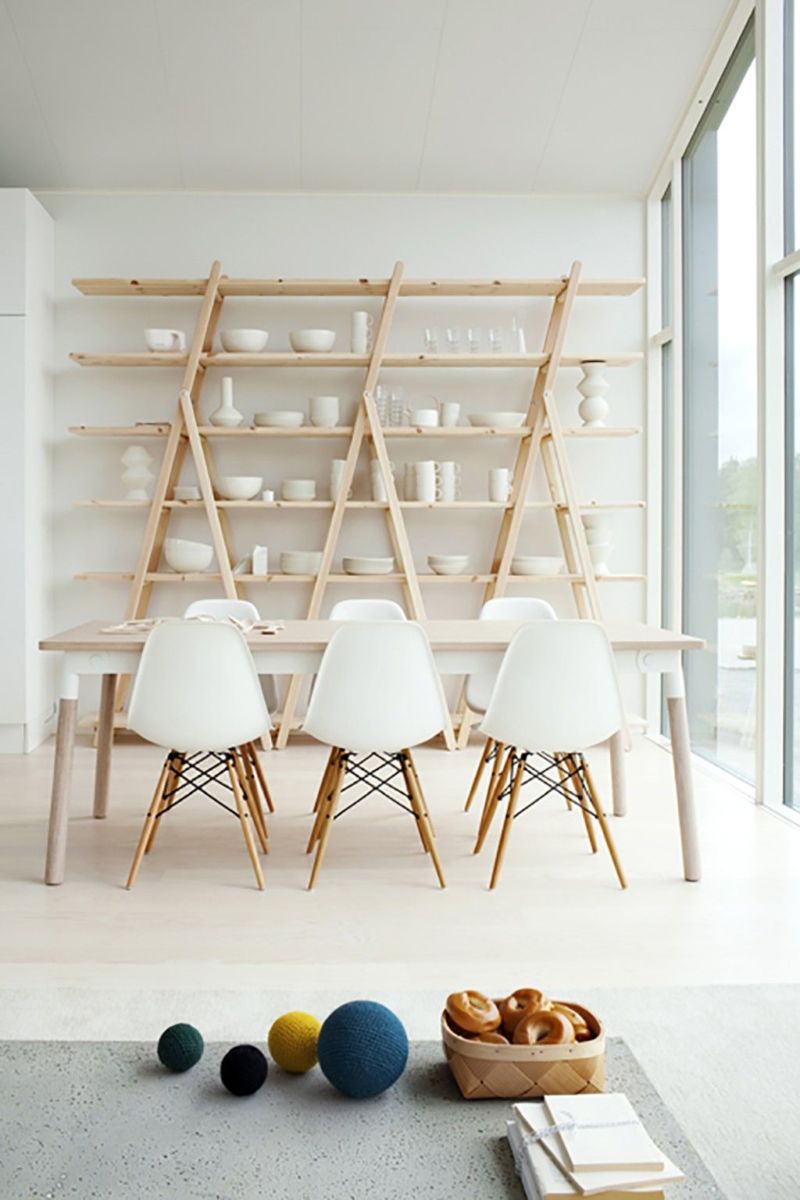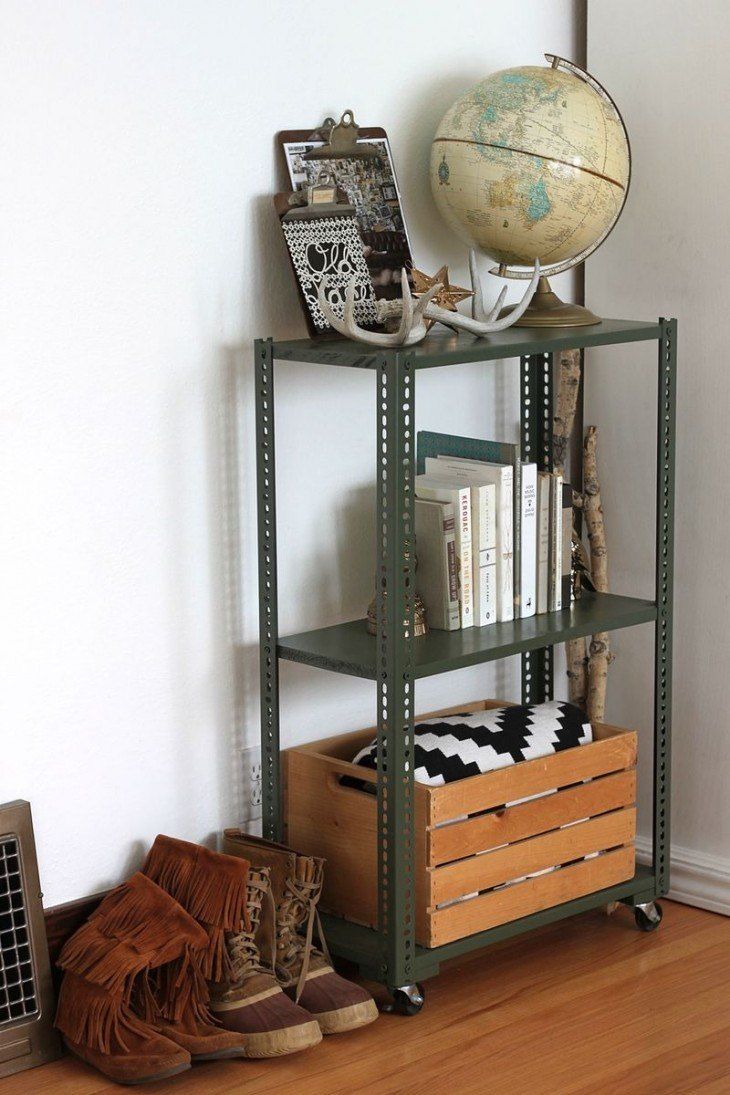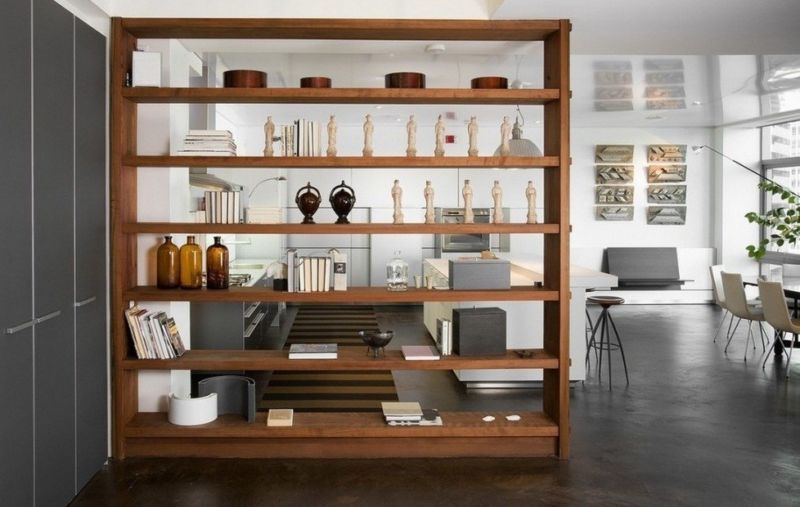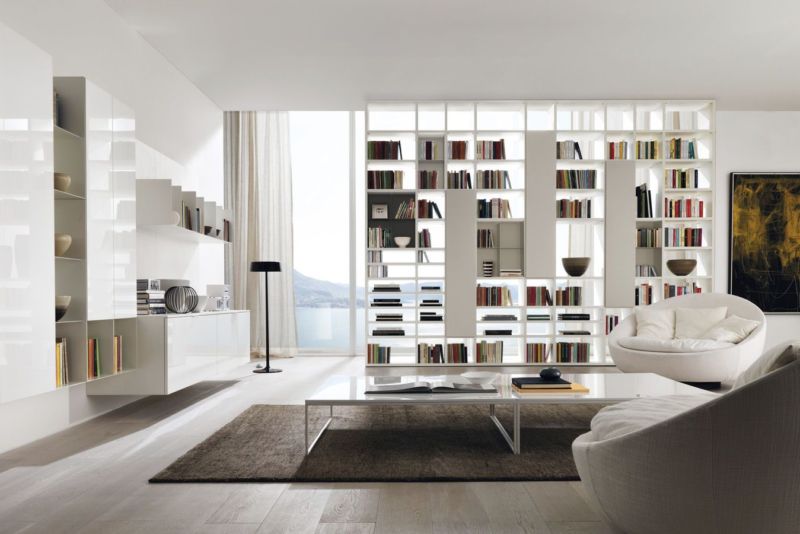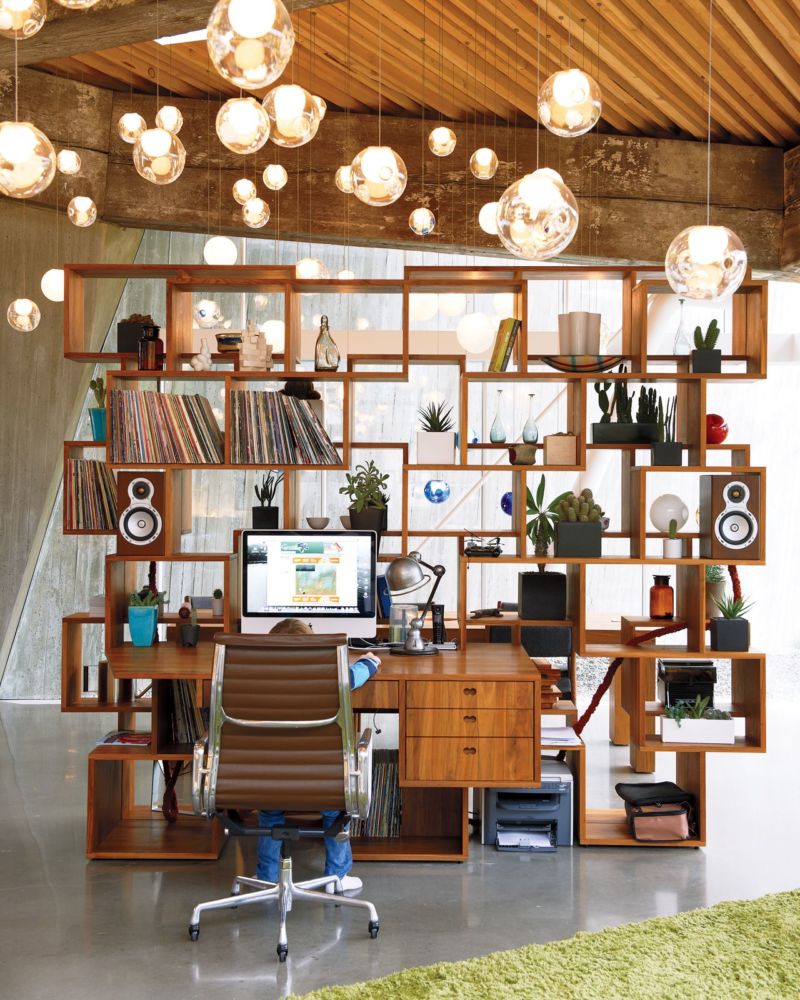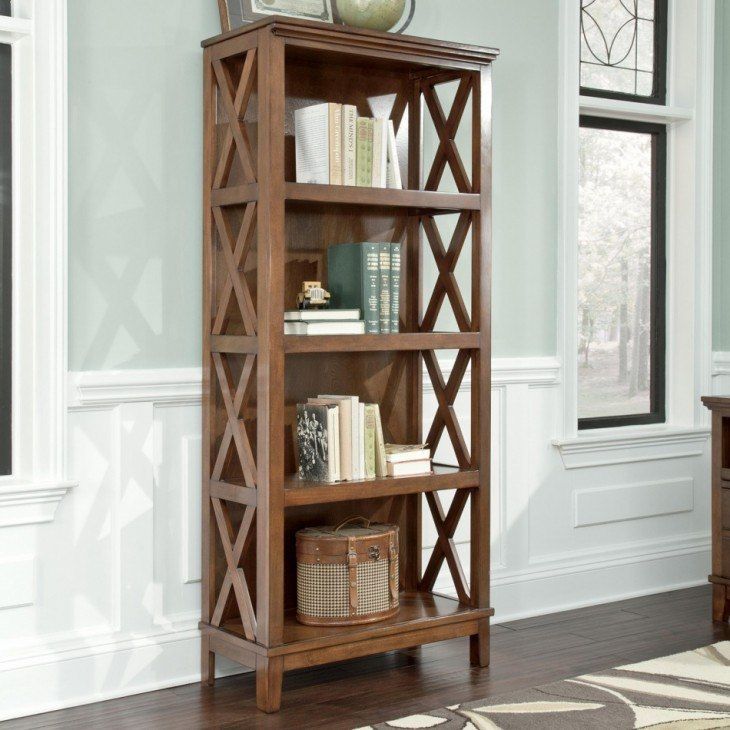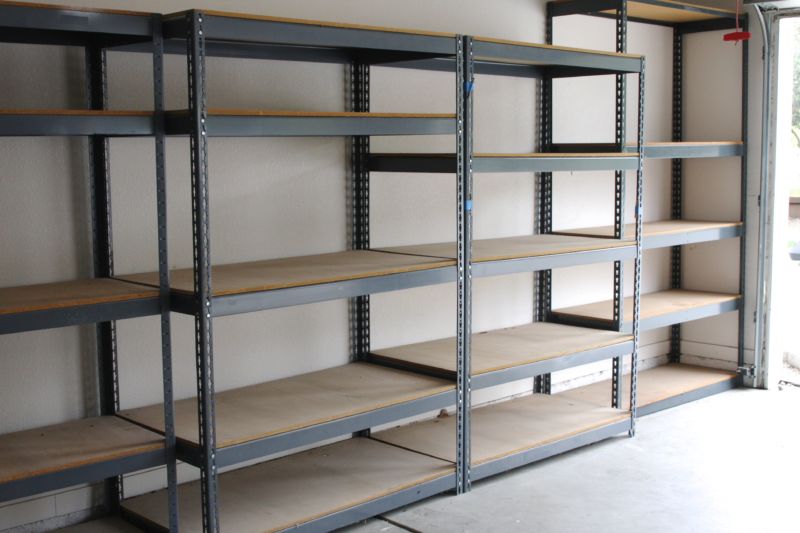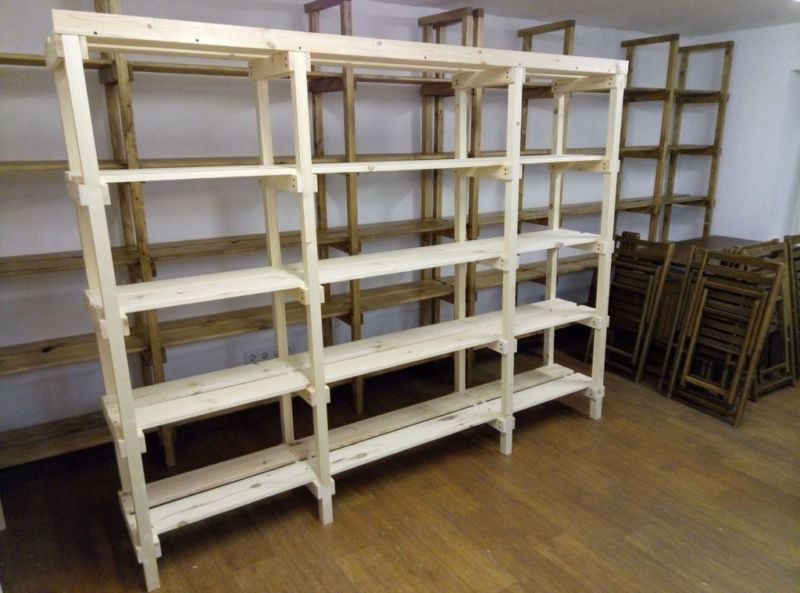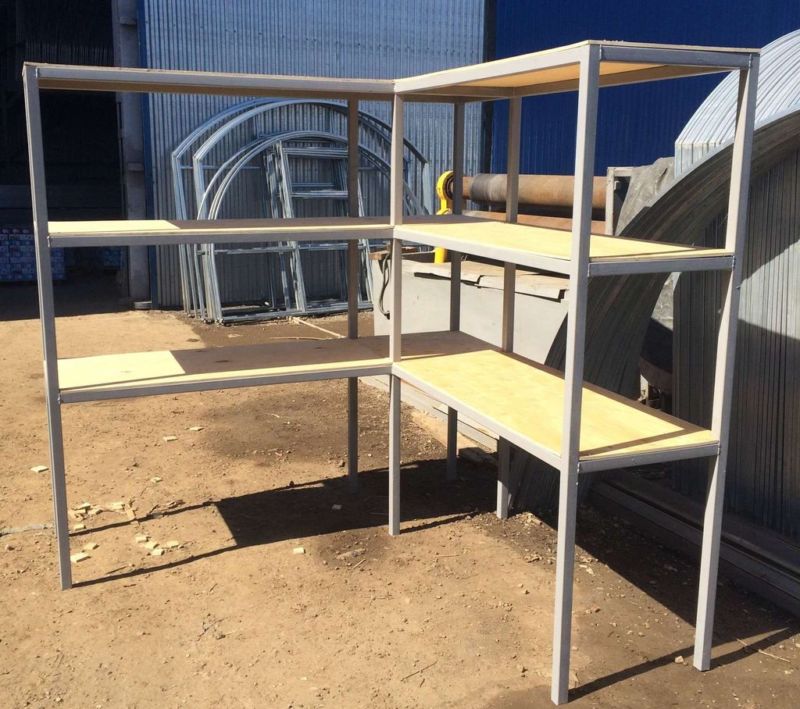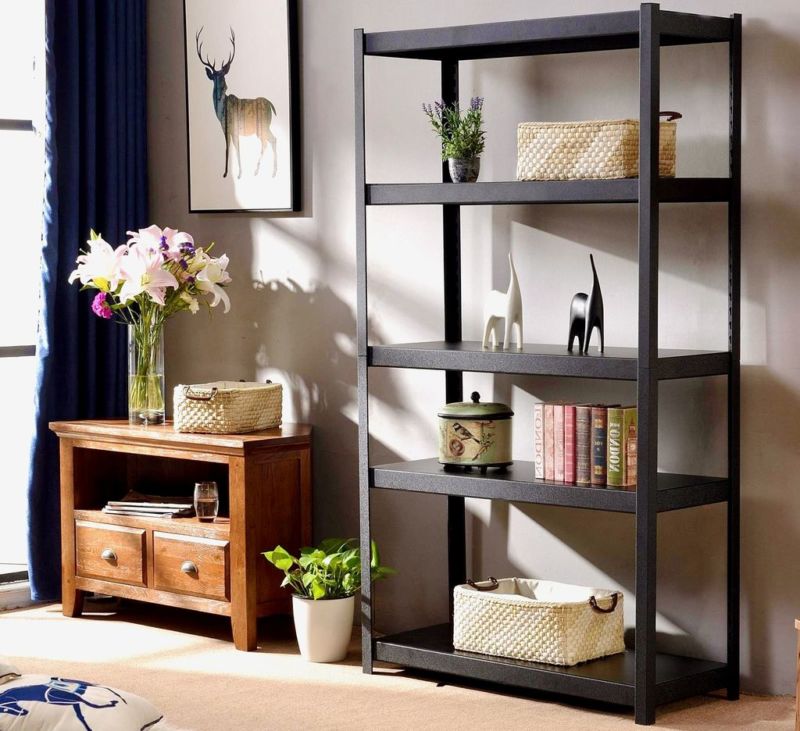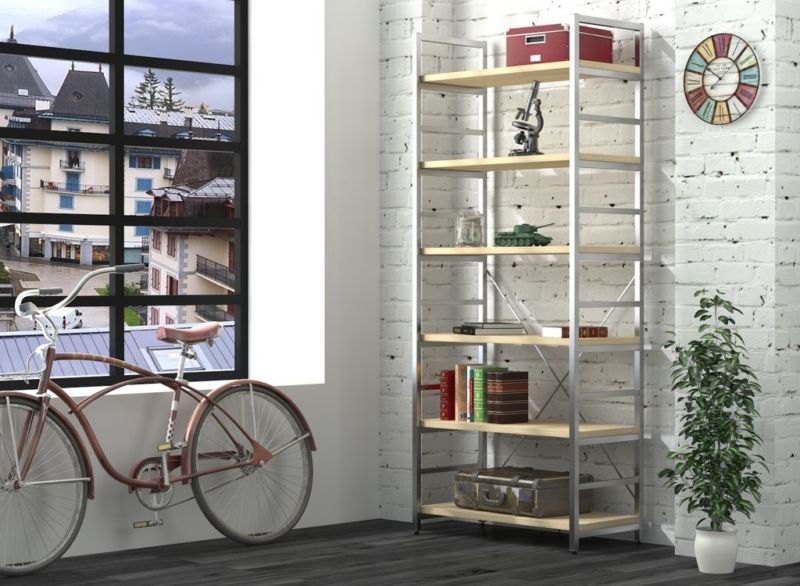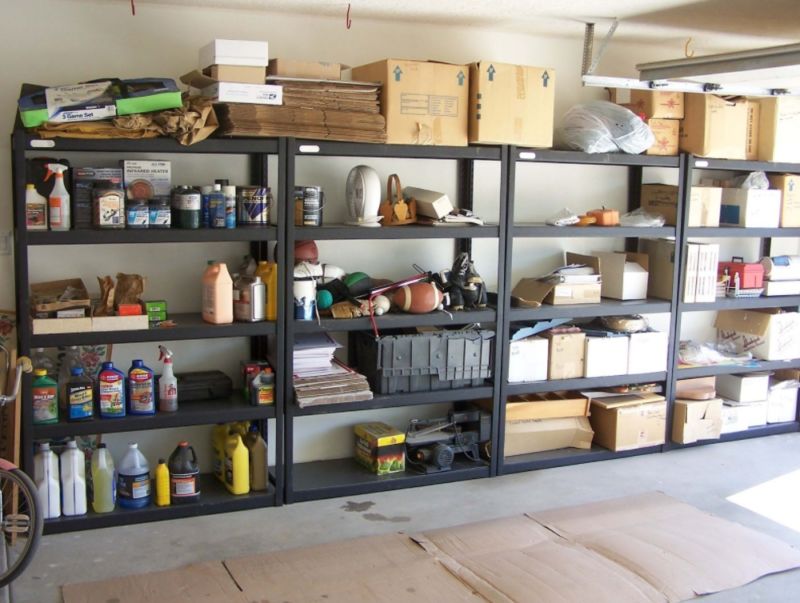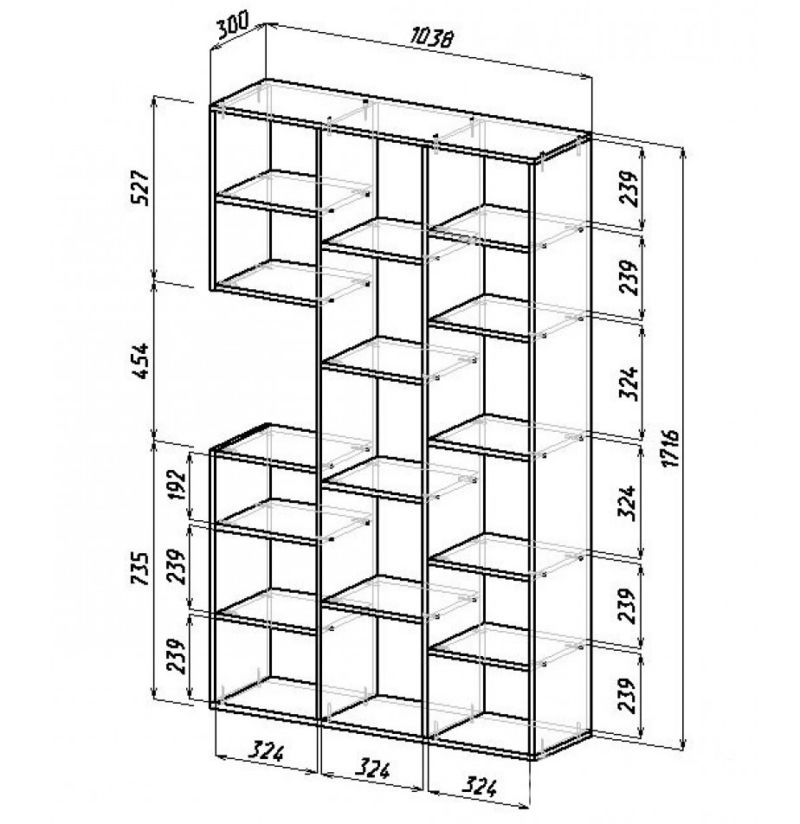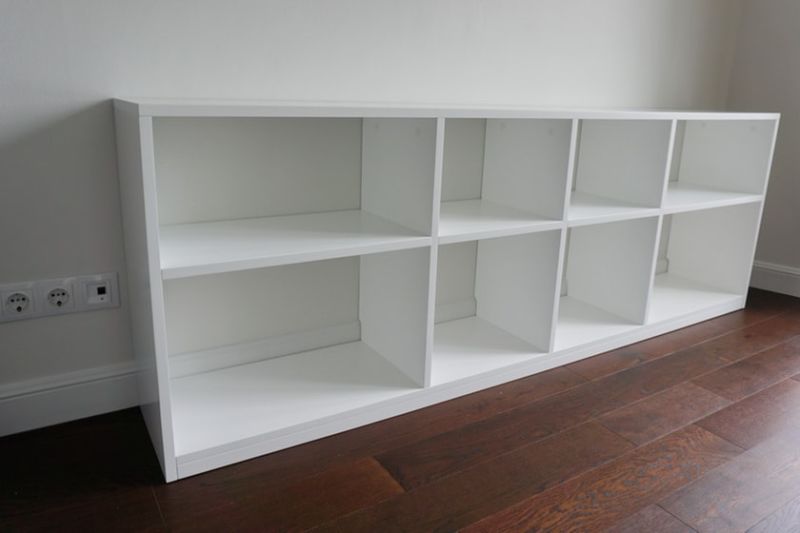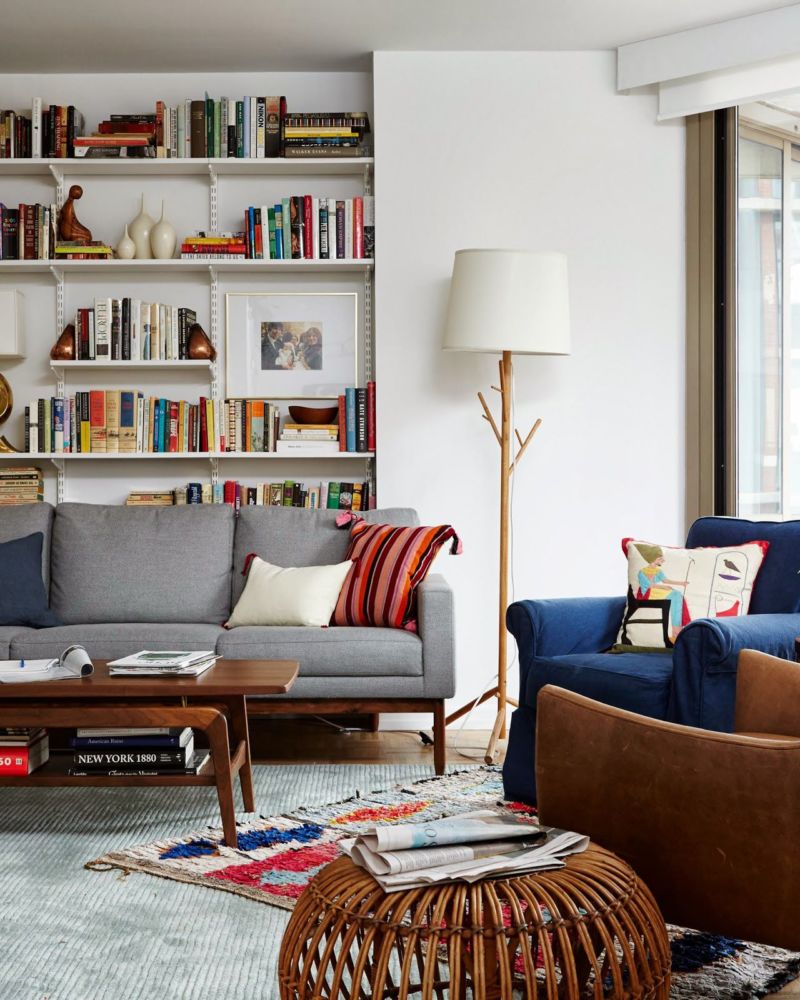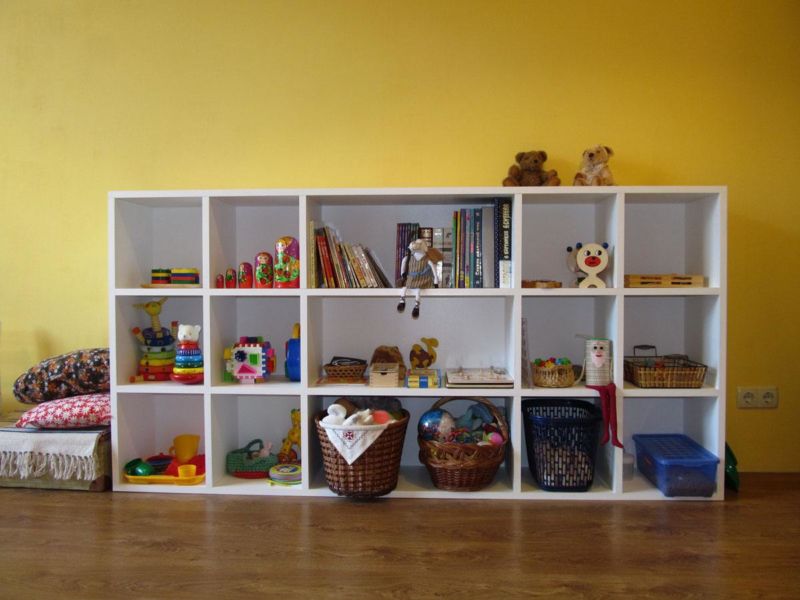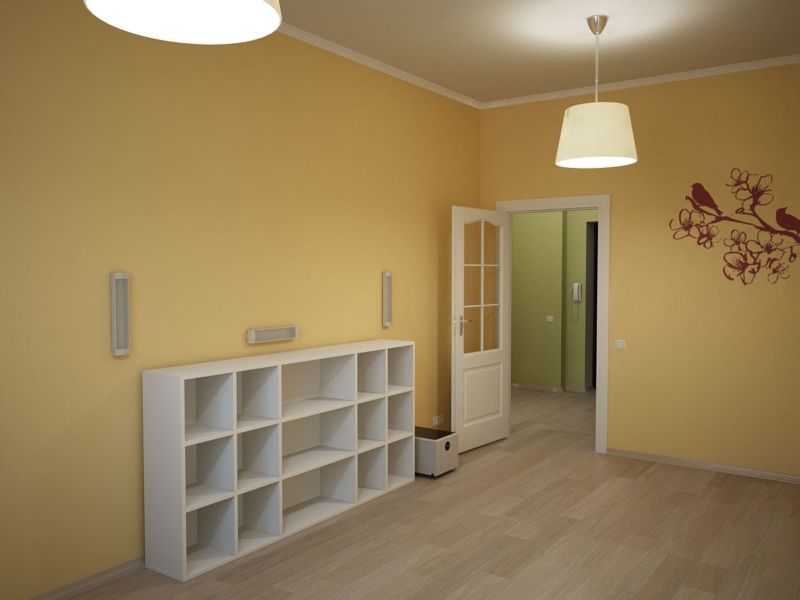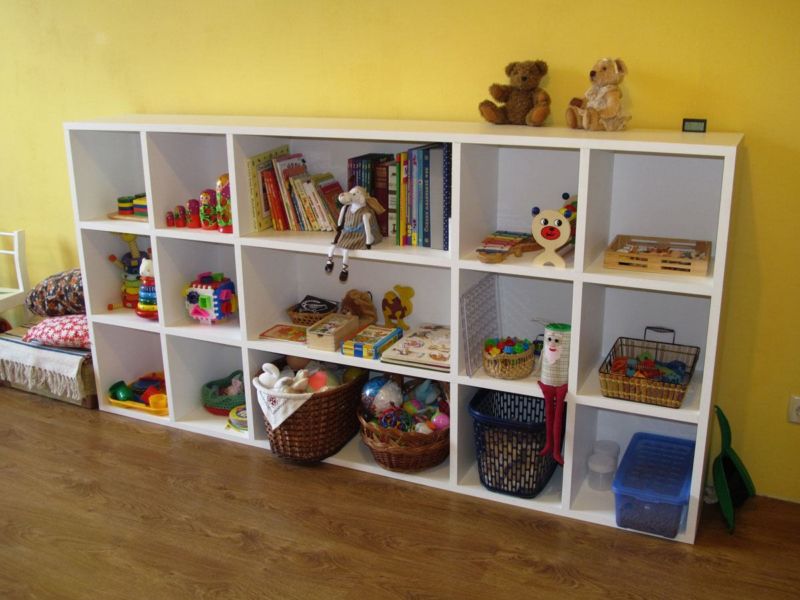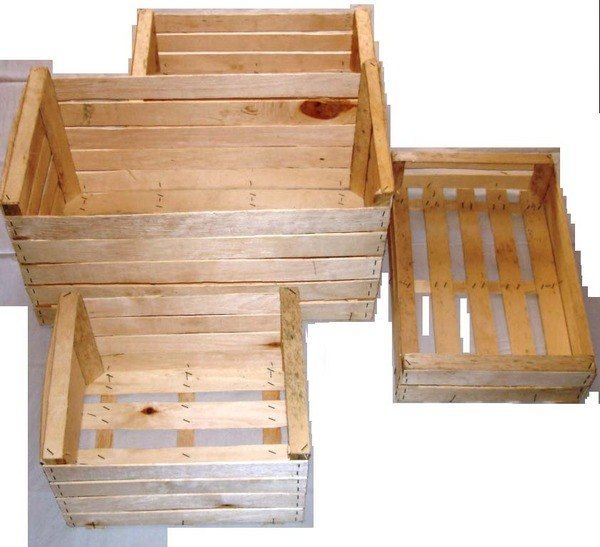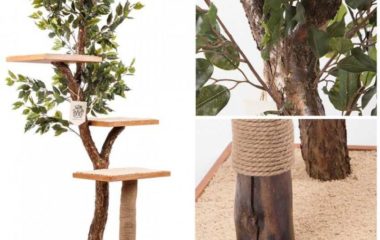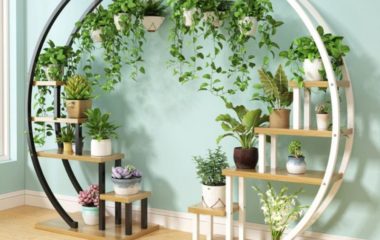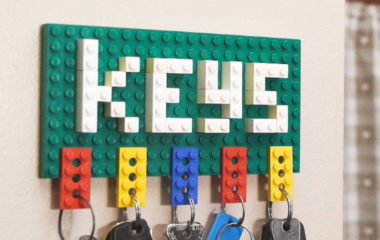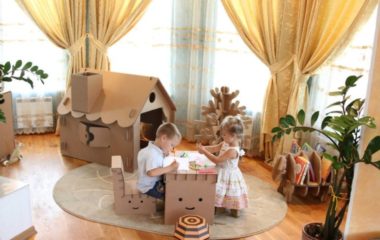How to make a shelving unit with their own hands: schemes, drawings and master classes from experienced craftsmen
Racks are a great option for a storage system. They are much cheaper than cabinets, and also do not require skill if you want to make their own hands. Racks are actively used to equip various storerooms and workshops.
Such a storage system meets modern fashion trends, can be used to store items in a room of any purpose. There are various ways to make a handy shelving unit with your own hands.
Types and purpose of racks
Some variations of racks are suitable for use in the residential interior, others are appropriate exclusively for economic purposes.
They differ not only in appearance, but also in design features and materials of manufacture.
Usually the shelving unit in the garage or on the balcony is externally simpler, but stronger and larger. The copies for storing books, disks and trifles can be more elegant and interesting.
In the garage.
Racks in the garage - an important element of the equipment of a comfortable workspace. Often the storage system here is made solid along the entire perimeter of the walls. In most cases, the choice falls on simple stationary shelves from floor to ceiling.
With this option, it will be easy to place everything you need. In addition, small mobile and rotating shelves can be used. Usually constructions are made of metal or wood, often the materials are combined.
Before you perform shelving in the garage with your own hands, it is important to make all the calculations. First of all, determine with the dimensions, the location of the elements. Usually, the framework for fixing the shelves is created from metal rails.
They are attached to the wall with dowels or special screws. The shelves can be bolted or welded, depending on the selected material. Do not forget to paint the structure, this will prolong its life.
To the balcony
By analogy with the garage storage system, it is easy to make a construction on the balcony. Here you can perform shelves, reinforced with rails to the wall. Such a stationary system will provide a secure storage space.
In the space, which is used not only for storing things, prefer to install more aesthetic options. Most often these are reinforced or freestanding wooden products.
For a balcony, this would be the perfect solution. It is not necessary to make complex designs. A simple, but neat shelving unit is the most relevant here.
On the shelves of such a piece of furniture, you can store everything from food preparations for the winter to decorative elements.
To make such a piece of furniture for the balcony, you do not need to have special skills in carpentry craft. Everything is elementary, but the work requires attention.
If there is an opportunity to understand the intricacies of performing complex options, you can make a beautiful rotating shelving unit, convenient sliding shelves or think through the features of the design taking into account individual desires and needs.
For books
Shelving for books, despite the fact that it is usually an element of home furnishings, should not be distinguished by special aesthetics or design features. Most often it is a standard simple set of shelves on a base.
The typical material for making such things is wood. Less often metal and plastic are used.
The external features of the bookcase depend on the style of the interior, in which the thing is intended.
Popular design trends do not involve the use of complex designs. If necessary, instead of elementary stationary products perform mobile, rotating models.
The more complex the format of the thing, the more effort will have to be put into making it. If you wish, you can learn the principles of work required to make a special model. In the absence of carpentry skills, it is impossible to predict the result.
For flowers
A popular type of shelving is called a variant for plants. This is a design that can stand alone or be placed in a window opening.
On such racks it is convenient to exhibit not only numerous decorative indoor plants, but also seasonal seedlings. On such shelves even arrange a home vegetable garden.
Flower rack can be installed on the floor, a table, attached to the wall or inside a window opening.
For the manufacture of such structures, materials that are resistant to moisture are used. The basis can be not only bars of wood, but also pipes.
Shelves can be both wooden and metal or made of durable glass. Simple variations are popular. In complex designs, shelves can extend, there may be built-in lighting and other functions that simplify operation.
Mobile shelving unit
A great idea for young, dynamic people will be mobile shelving. With them it is convenient to change the space as needed. Mobile shelving units include:
- Large mobile structures. These are variants which are not fixed to the wall. Racks on wheels usually fall into this category.
- Compact variations. These are portable shelves for various small things. Usually they are installed on the table.
- Items with design features of the mobile type. Racks can have pull-out, rotating, pull-out shelves. The item can change its initial configuration in different ways.
Mobile racks are often more difficult to make with their own hands than stationary variations. To cope with the technical complexities under the power of not everyone.
Suspended
Another variant of shelving is considered a suspended design. This is roughly speaking ordinary connected shelves with several sections.
The design is very popular where the usable space is severely limited.
The attachment to the wall makes the construction stationary. Suspended shelving shelves can have different designs. Simple variations are not difficult to make with their own hands.
Shelving unit with their own hands: schemes and drawings
The principle of making a rack with their own hands depends on the chosen design.
The simplest variants are considered stationary and collapsible units with shelves. It is a construction of cross supports and vertical struts.
In one case it is reinforced and fixed, in the other it implies the possibility of easy changes in the design. Transformation occurs mainly due to the possibility of changing the level of the shelves. This is achieved through the use of perforated metal for the base.
Movable and rotating racks please with extended functionality, but not everyone can do in the independent manufacture. To determine the design, it is necessary to clearly understand the purpose of the subject, take into account the size of the room.
In any case the work begins with a choice of shelving unit type. This will be followed by making a drawing. Even if it is a simple version, a scheme with a marking of the parameters of the future product will be needed to perform the work.
Each component of the item is evaluated in detail and entered on the drawing. Having made a schematic representation, it is possible to assess the upcoming result, in time to make the necessary adjustments.
The next stage of the work will be the procurement of materials, preparation of tools. Here everyone has his own strategy.
After all the preparatory steps, proceed directly to the production. To begin with, it is necessary to prepare all the details. According to the scheme and previously set parameters perform blanks.
After that, collect the frame, which is subsequently supplemented with shelves. Act strictly according to the planned scheme. In this case, the likelihood of the need for alterations is minimal.
Variants of shelving units
There are different variations of shelving. The difference lies not only in the design features. The materials used and their combinations can be dissimilar. In each case, there are subtleties of work, which it is better to find out in advance.
Wooden
Making a wooden shelving unit with your own hands is not difficult. For the work you will need supports, bars and planks. To fix the structure need metal corners, clusters, screws. To treat the structure will need impregnation, varnish or paint. The workflow is as follows:
- To begin with perform the preparation of parts. If the size of purchased building materials is larger than that required for the planned construction, the dimensions are adjusted by trimming.
- Ready to assemble the construction elements are pre-processed. To do this you will need a special impregnation, varnish or paint. Details are dried before the further fastening among themselves.
- At the location of the future shelves to the vertical beams are screwed metal corners. On them fasten the horizontal supports. After that, proceed to the installation of the shelf. All this is done first with the lower shelf. Similarly, all the remaining shelf tiers are made.
This is a variant of the simplest construction. It will be more difficult to make a rack with side walls, as well as more complex products. If necessary, anyone can find a diagram, drawings and a detailed description of the working process.
From pipes
The work usually uses various remnants of pipes that were found on hand. These can be the usual round variations, but it is better to make a choice in favor of profiled copies.
Chromed pipes are preferred for home shelving, in other cases you can do with what you can find in stock.
For shelves you can use different materials. Most often it is plywood, boards.
To connect the parts use fittings, corners, tees. Flanges are used as wall fasteners and legs. Working with metal is more difficult. It requires special knowledge, tools. The design is assembled according to the scheme.
From the profile
To make the racks use metal profile made of standard galvanized elements, made of material at least 0.5 mm thick.
The characteristics are chosen on the basis of the loads to which the structure will be exposed.
As fasteners use self-tapping screws with a press washer. They are well pressed to the surface of the metal. For the shelves you will need plywood, board or OSB. Before starting work, be sure to perform a drawing, which will be a reference point during the assembly of the structure.
From the boards
Before starting to assemble a rack from boards, a drawing is performed, as well as the preparation of materials. When the saw cut to the required dimensions is made, on the boards of the side parts put the marks for the future shelves. At these points, fix the corners for fixing the shelf guides.
If necessary, install the side, rear panel of the structure. Fastening with self-tapping screws is recommended to be additionally strengthened with carpentry glue. The finished construction is sanded, varnished or painted as desired.
Racks are a popular piece of furniture. It is used in the home interior, as well as for auxiliary household purposes. There are different kinds of shelving units.
Elementary variations are not difficult to make with their own hands. No special knowledge is needed to perform the work. Familiarized with the different ways of making racks, it will be faster to make a choice of a suitable design.

